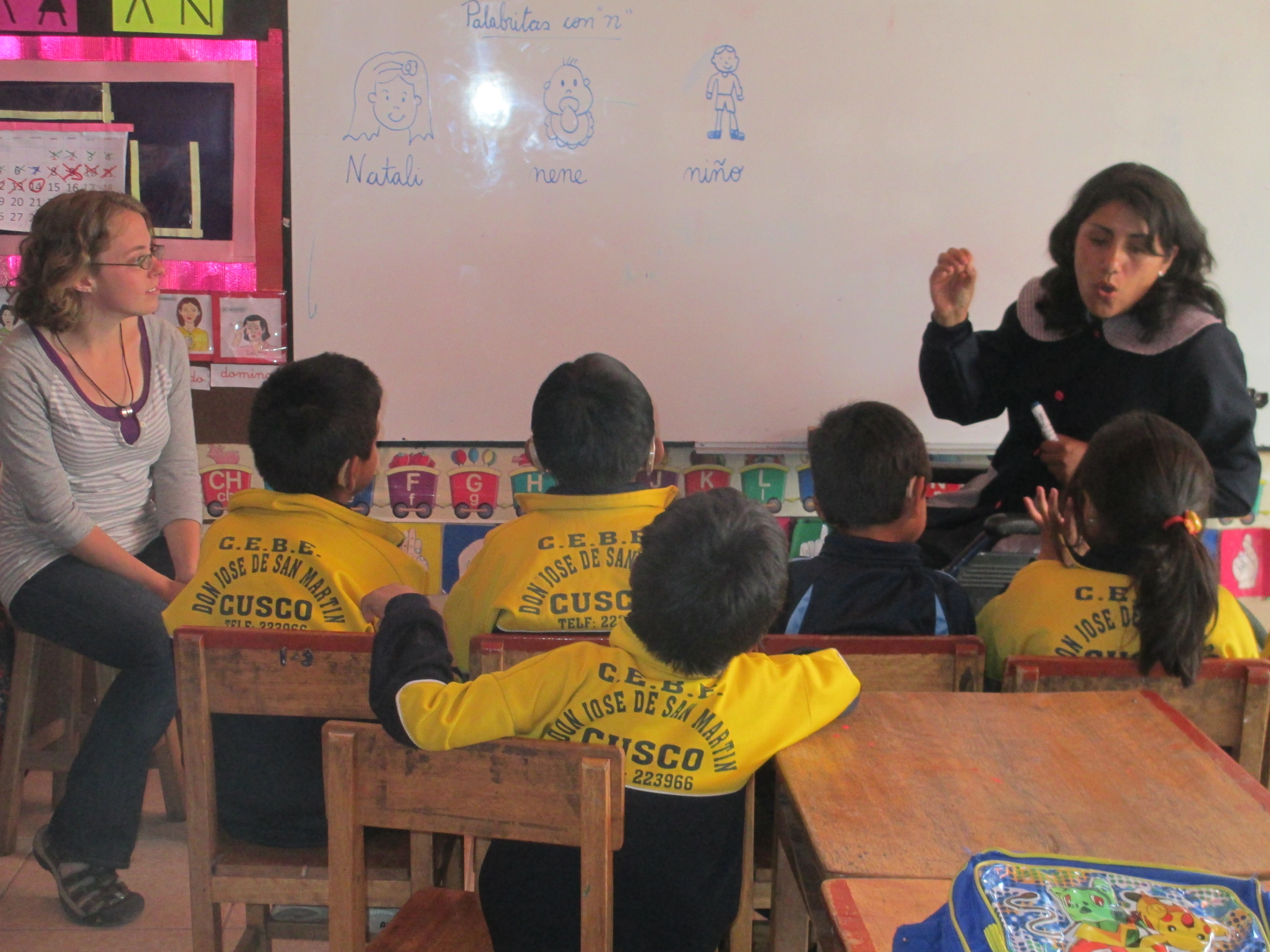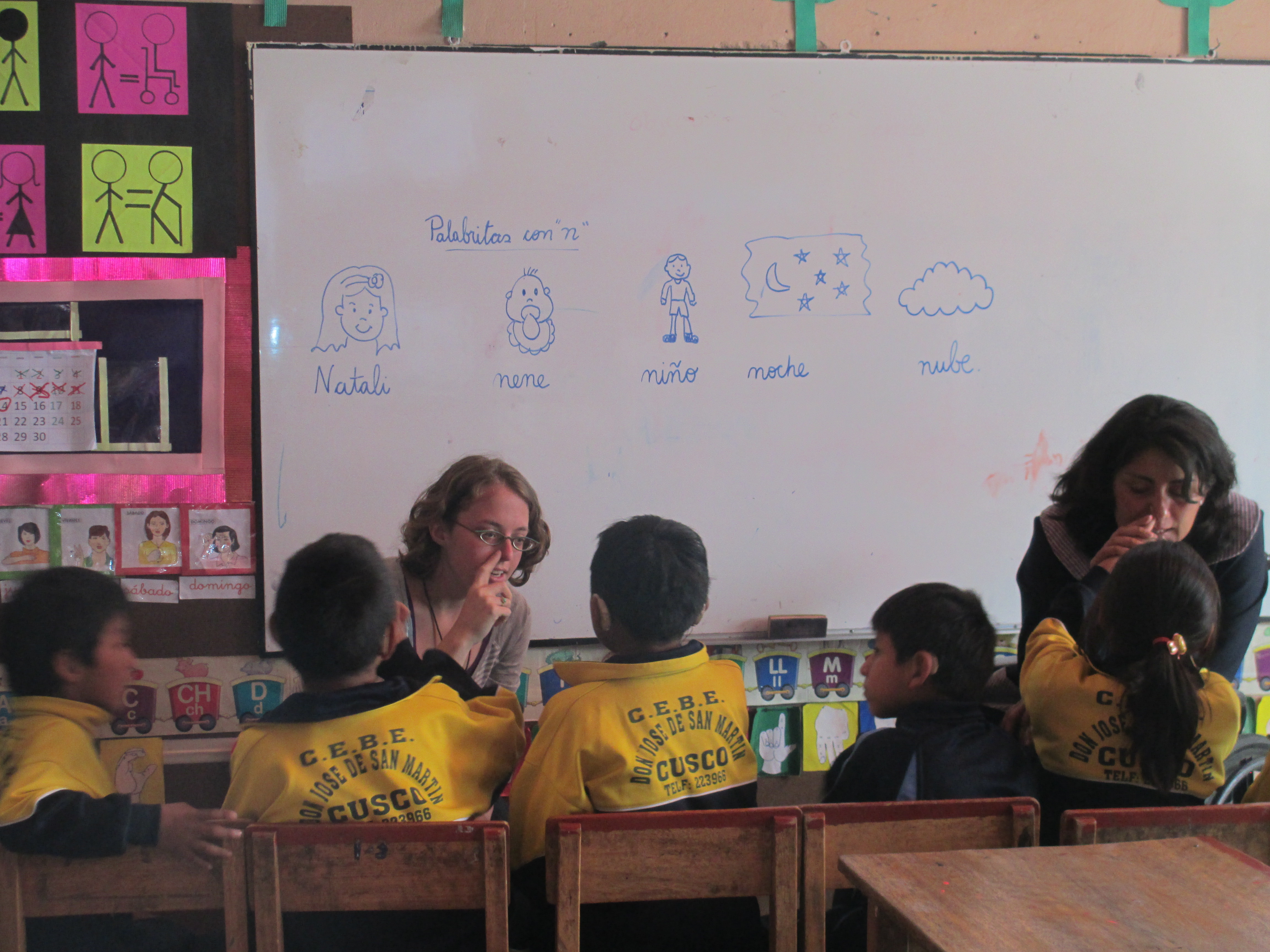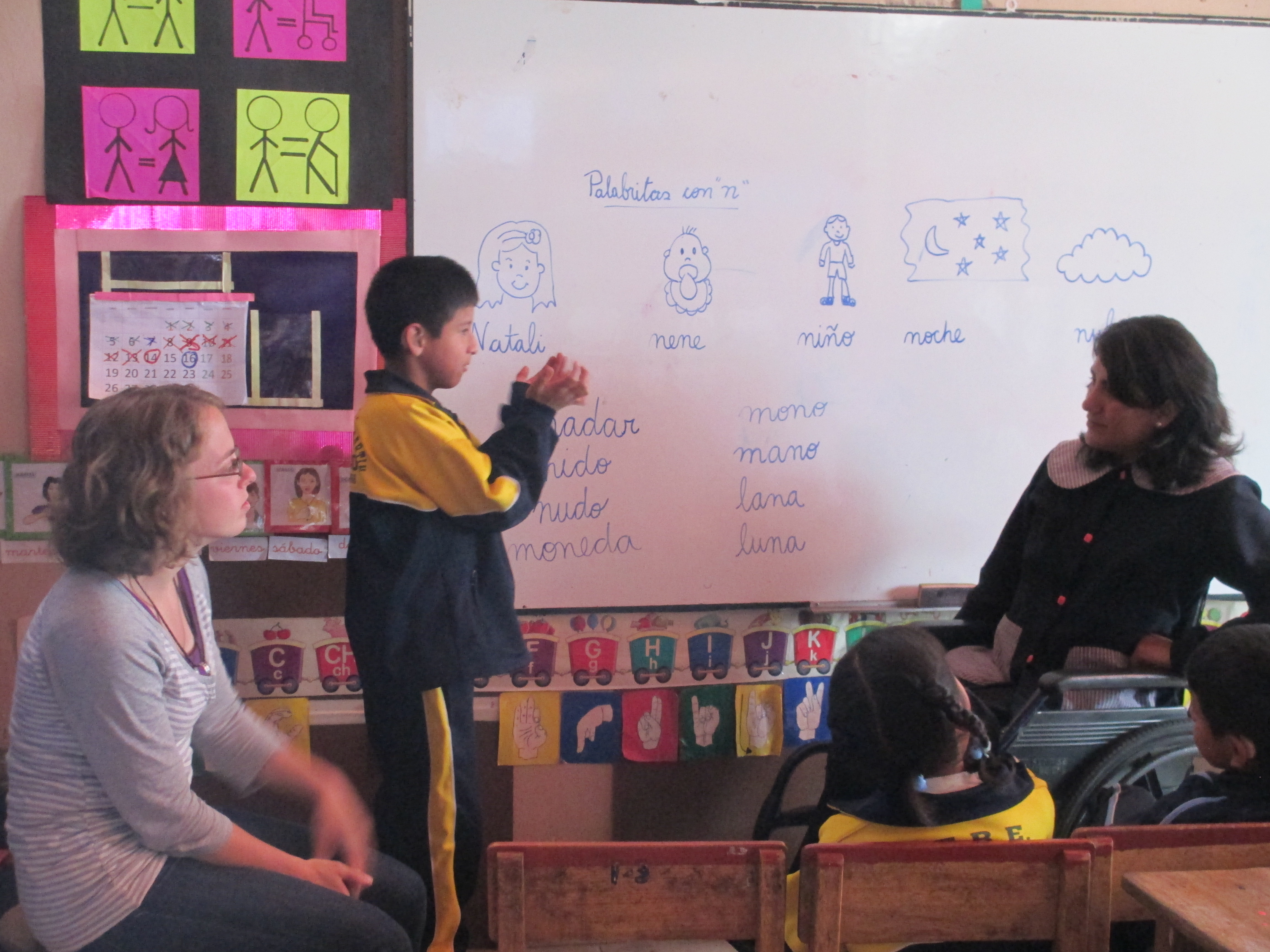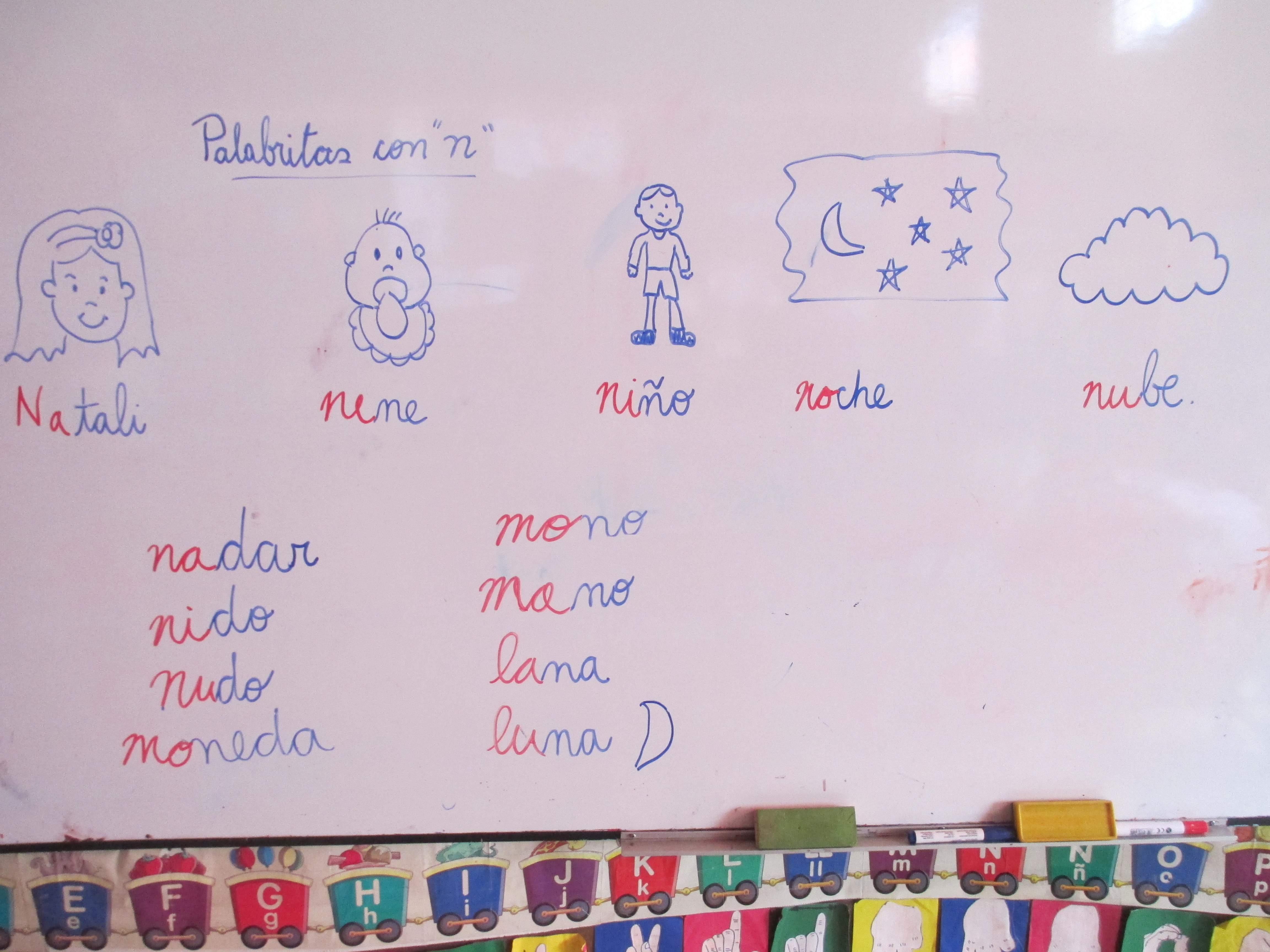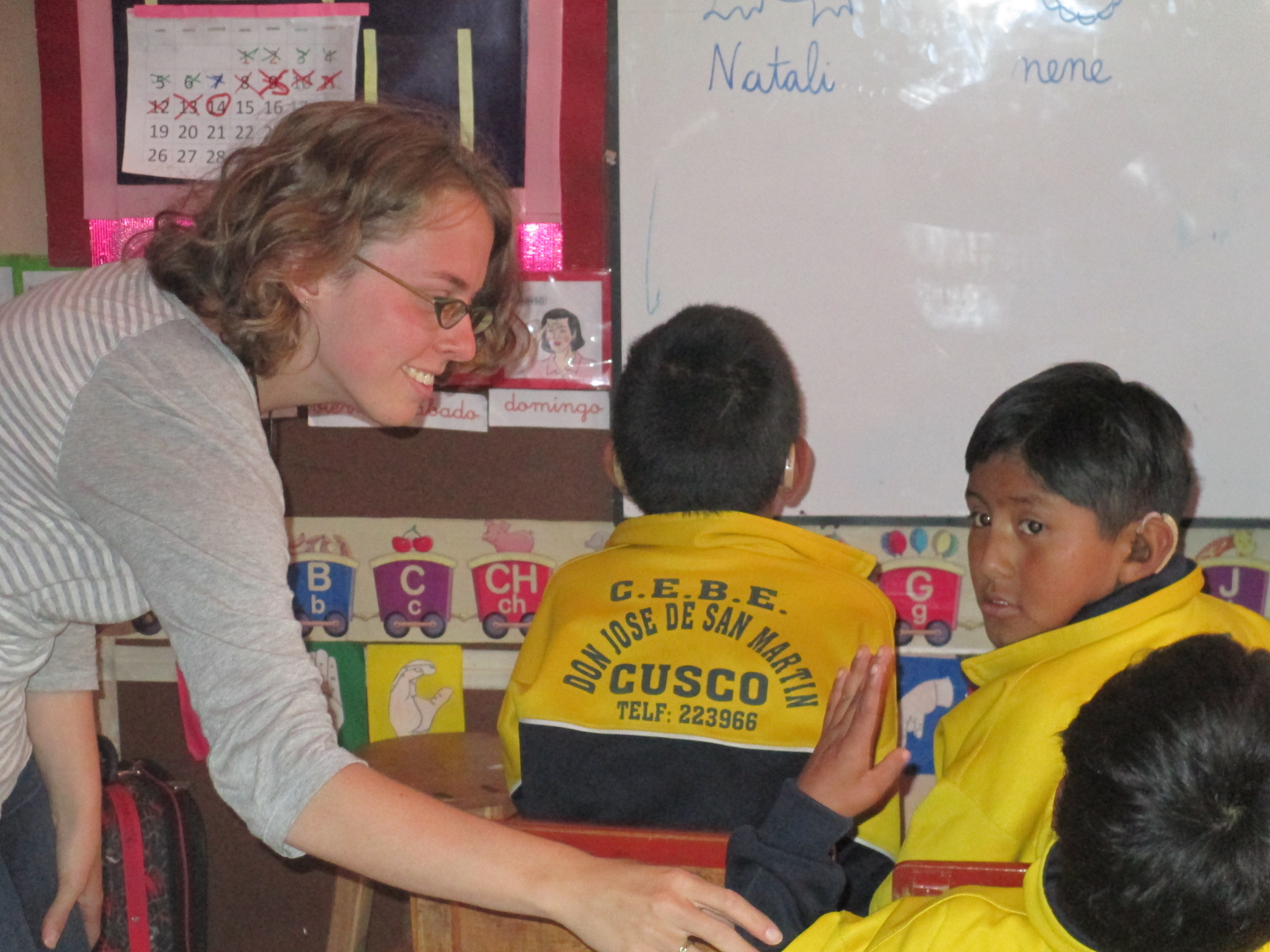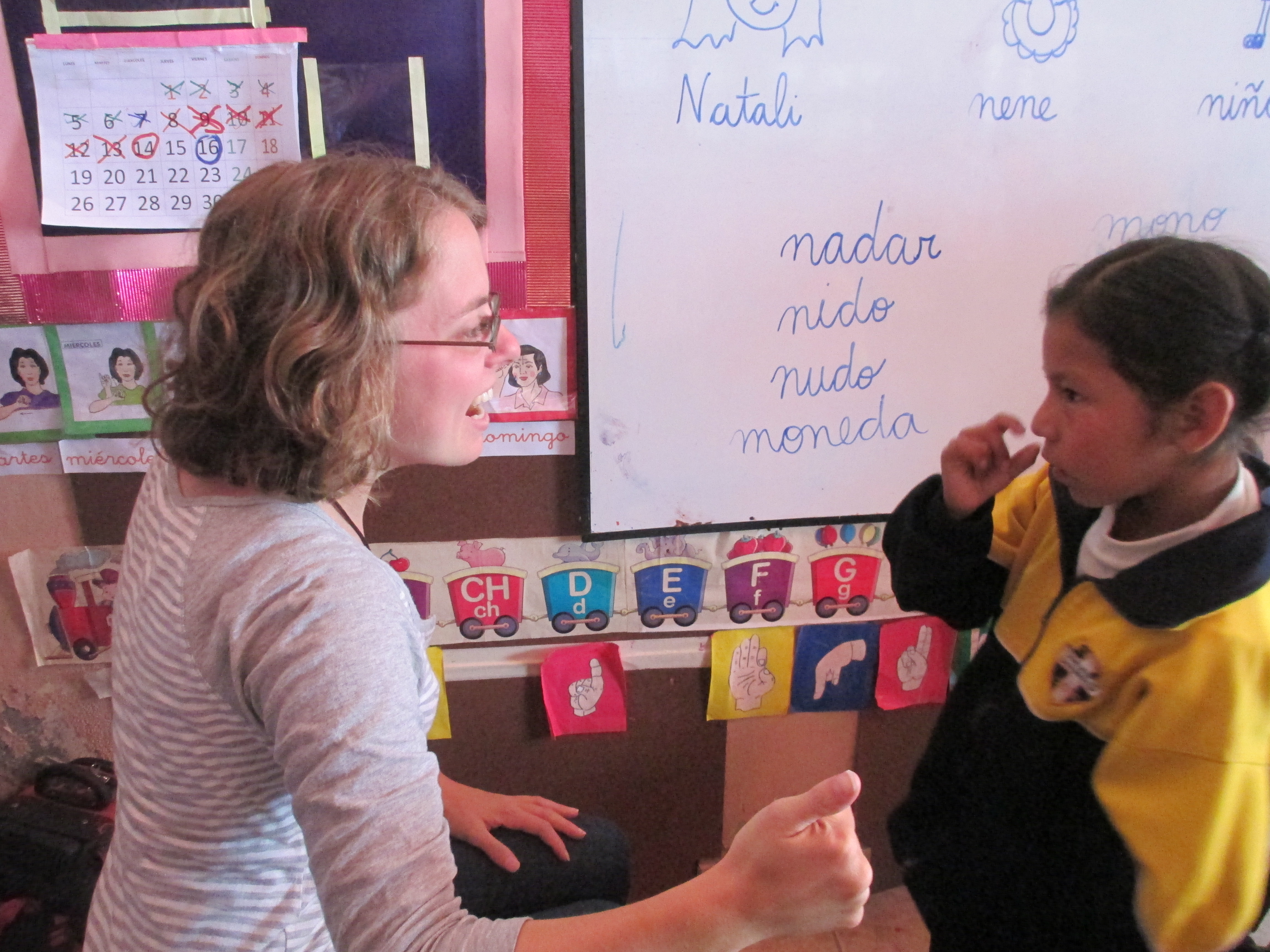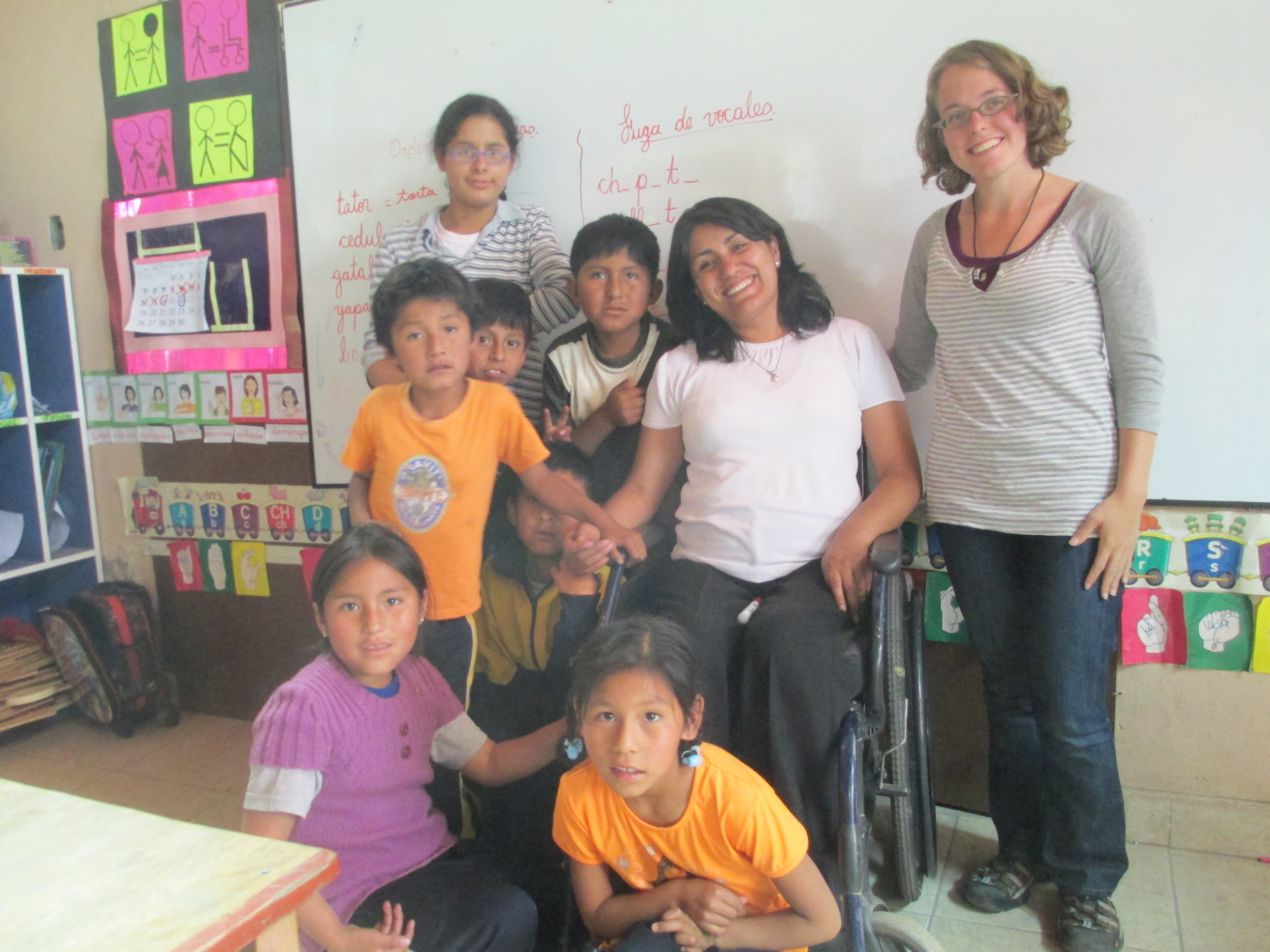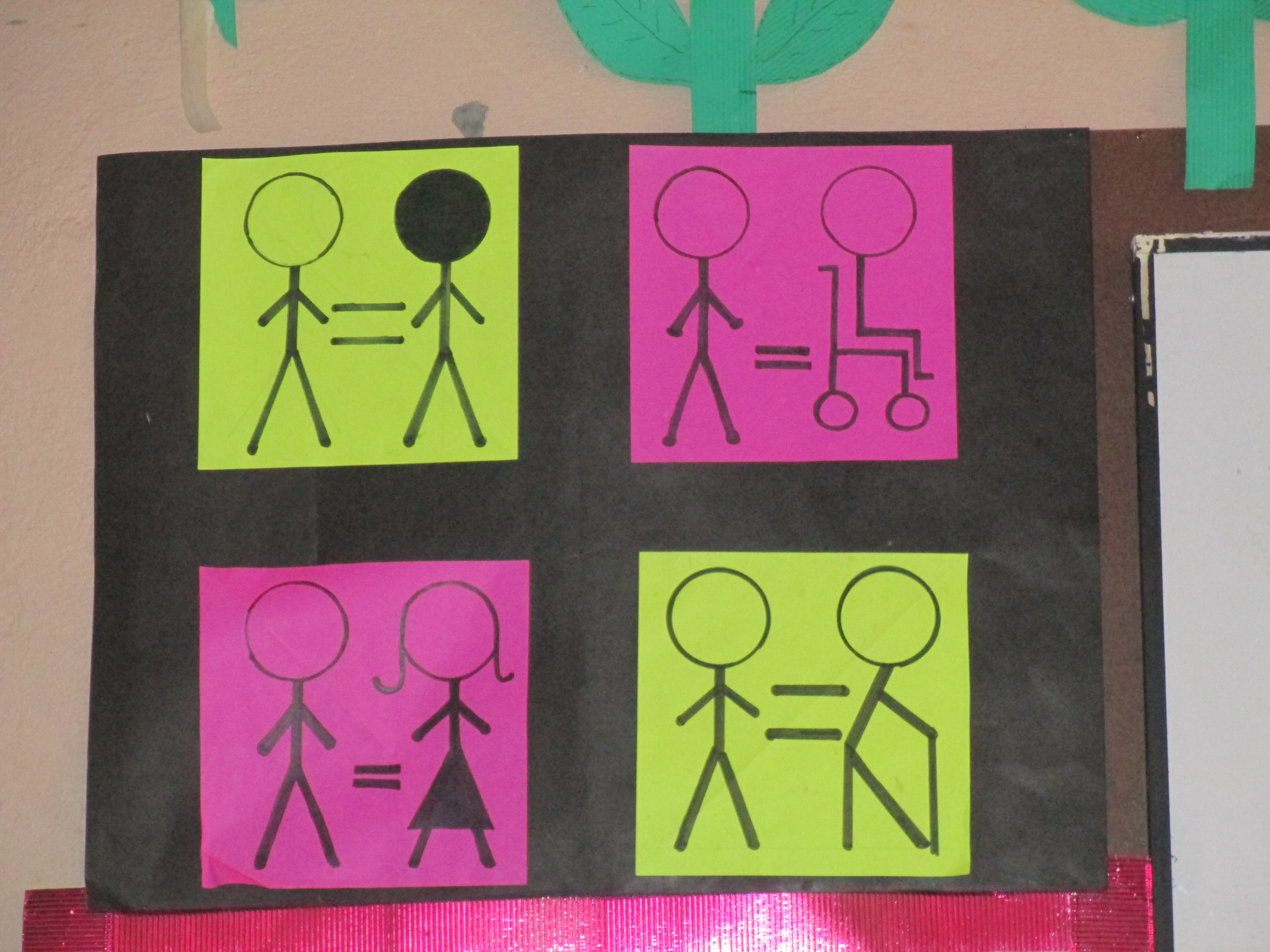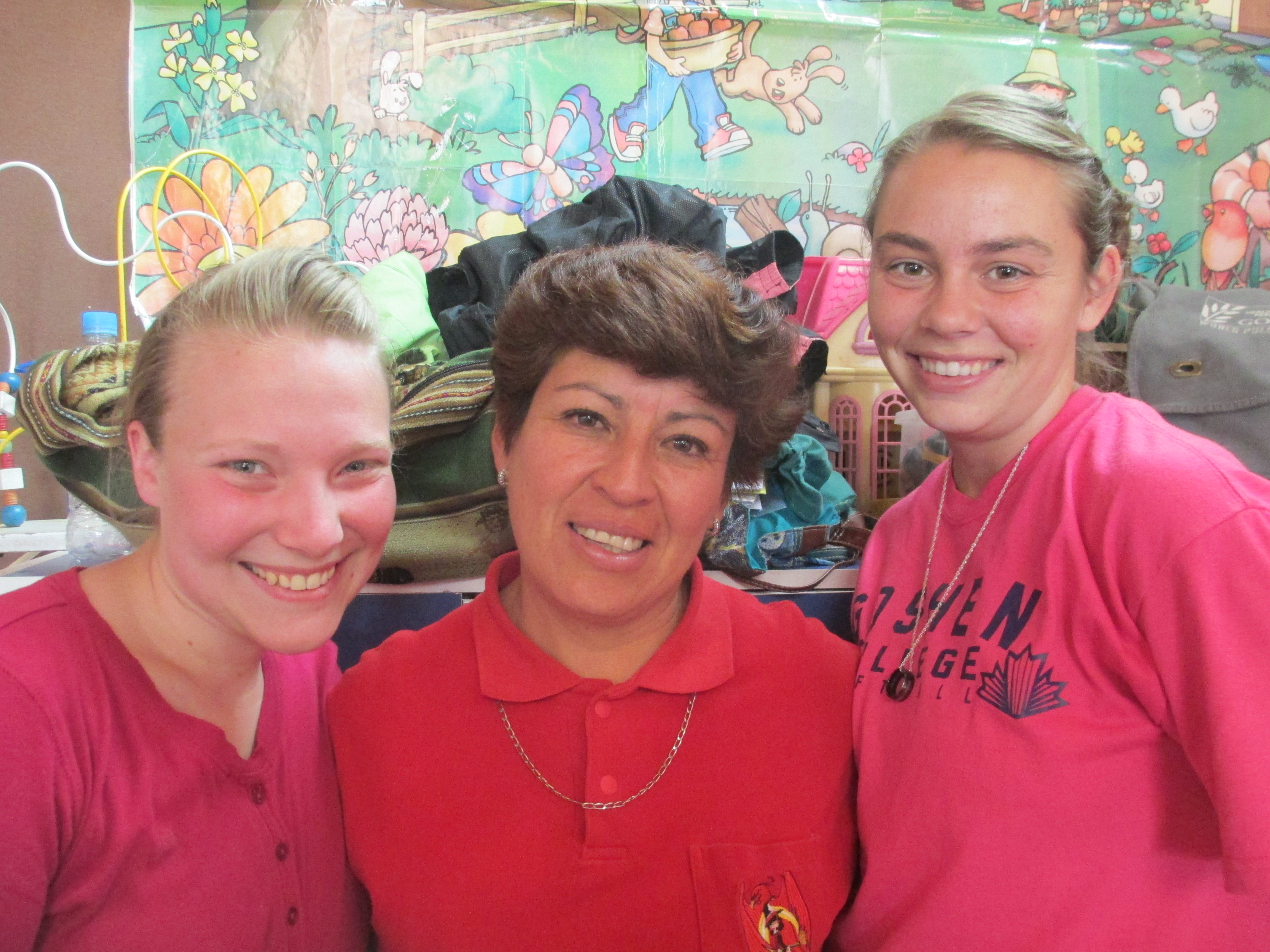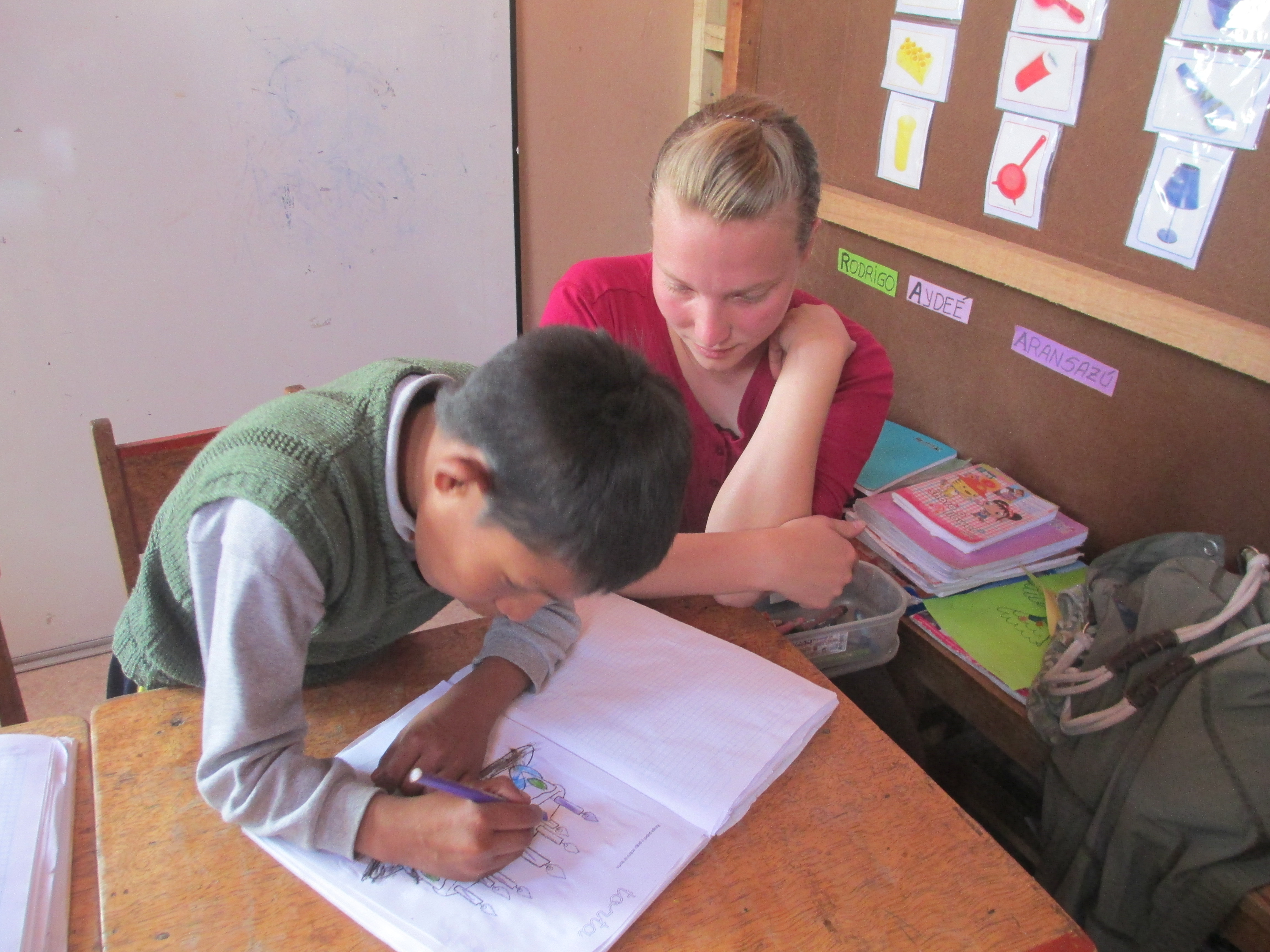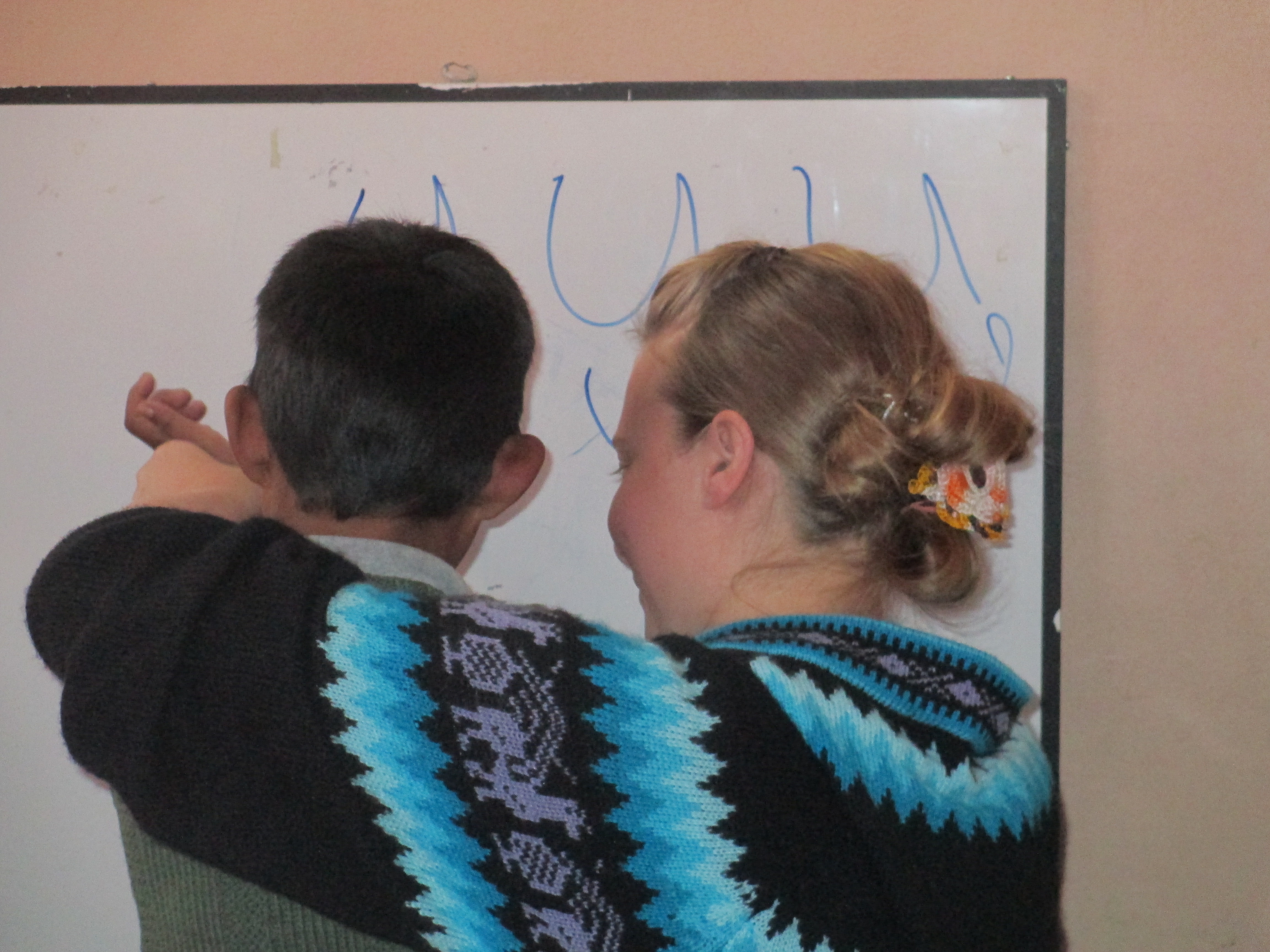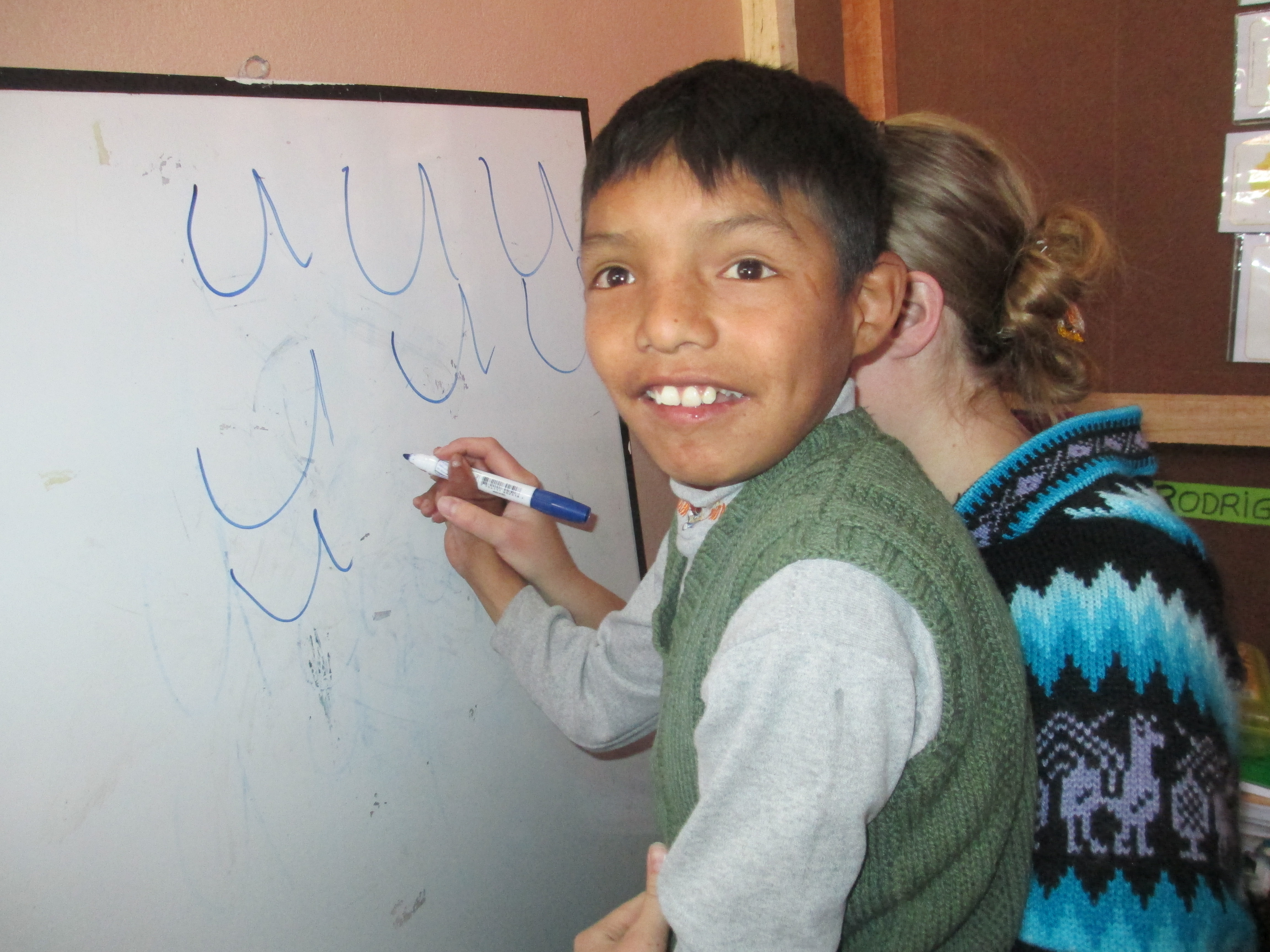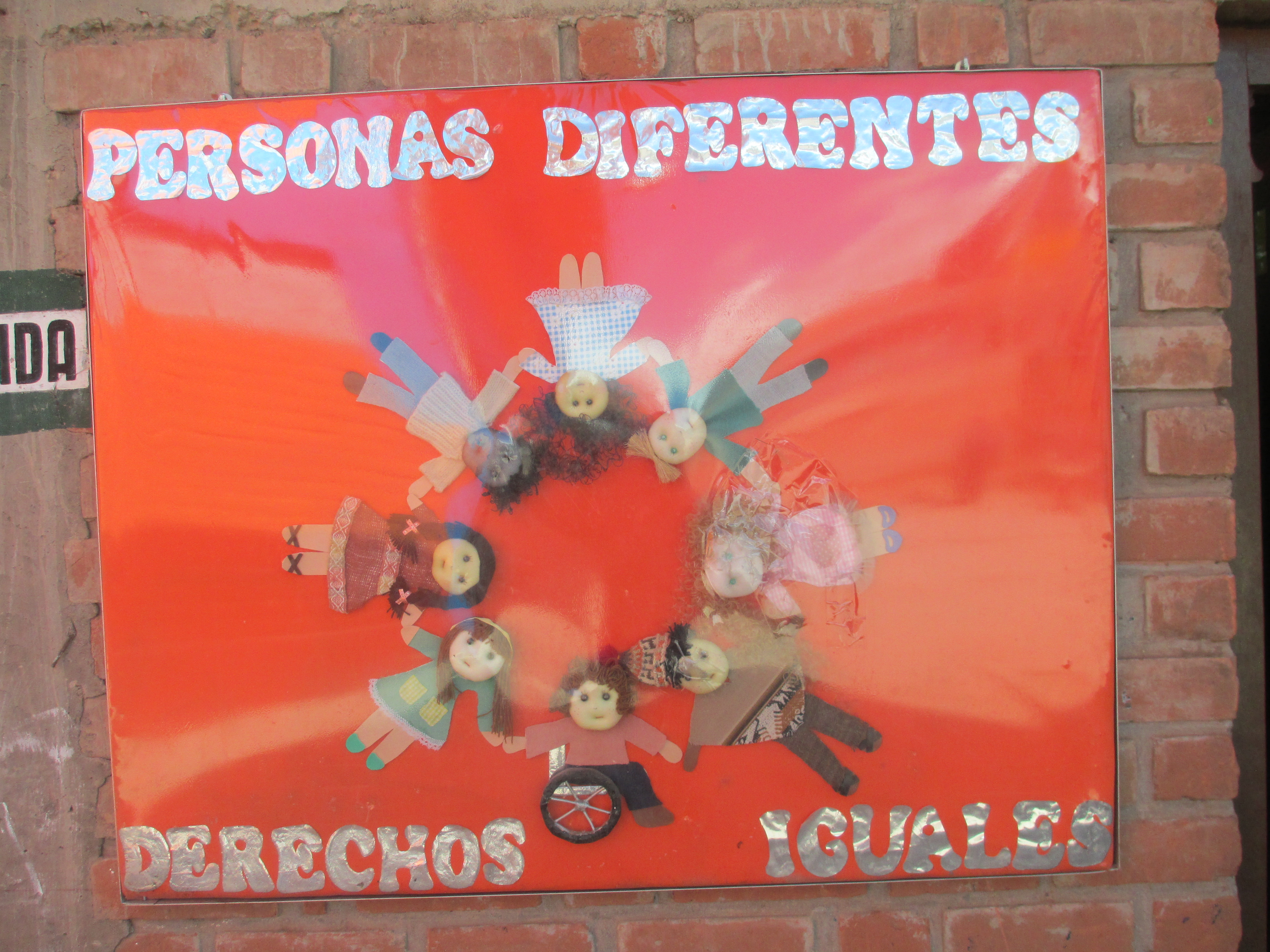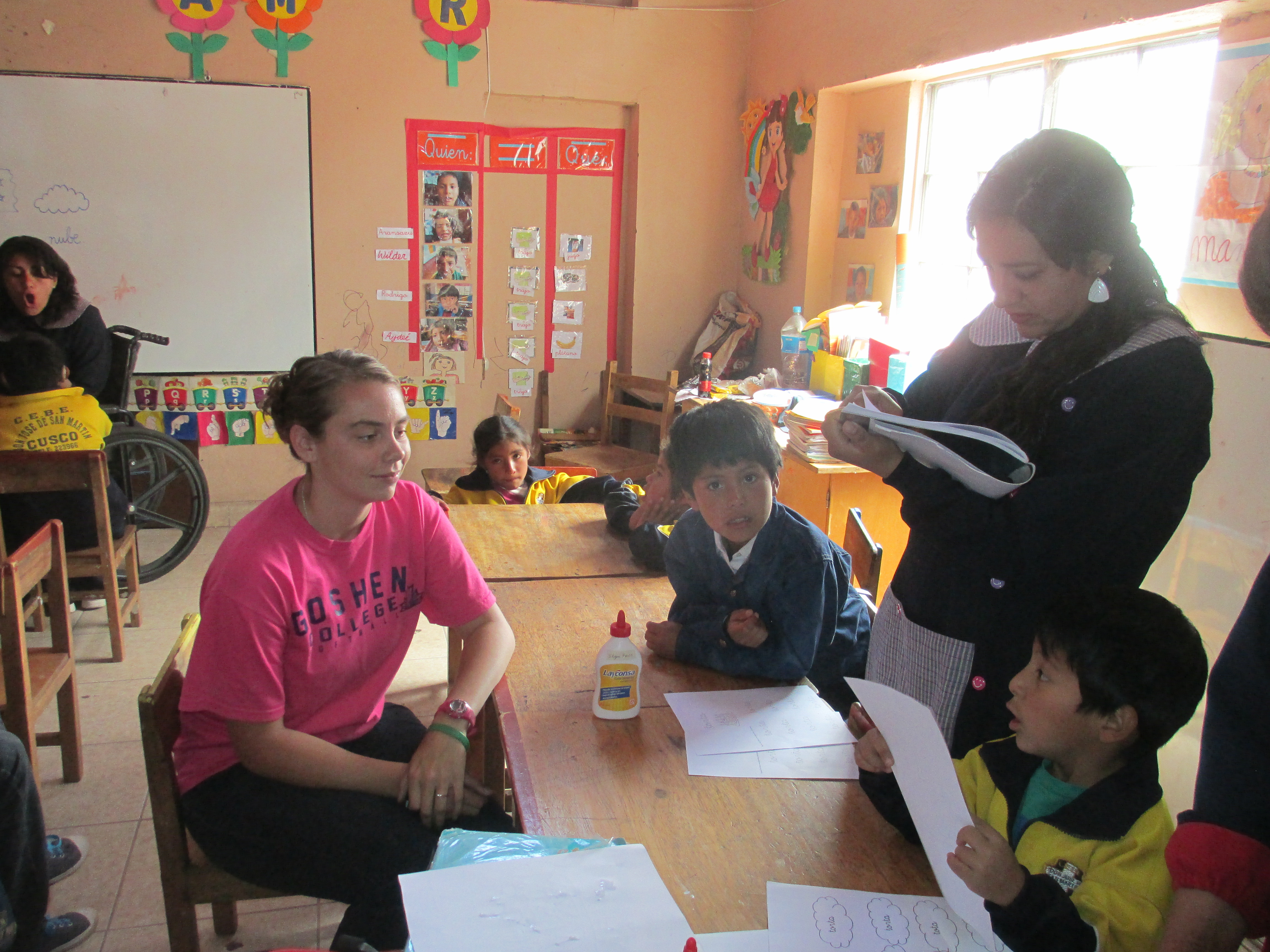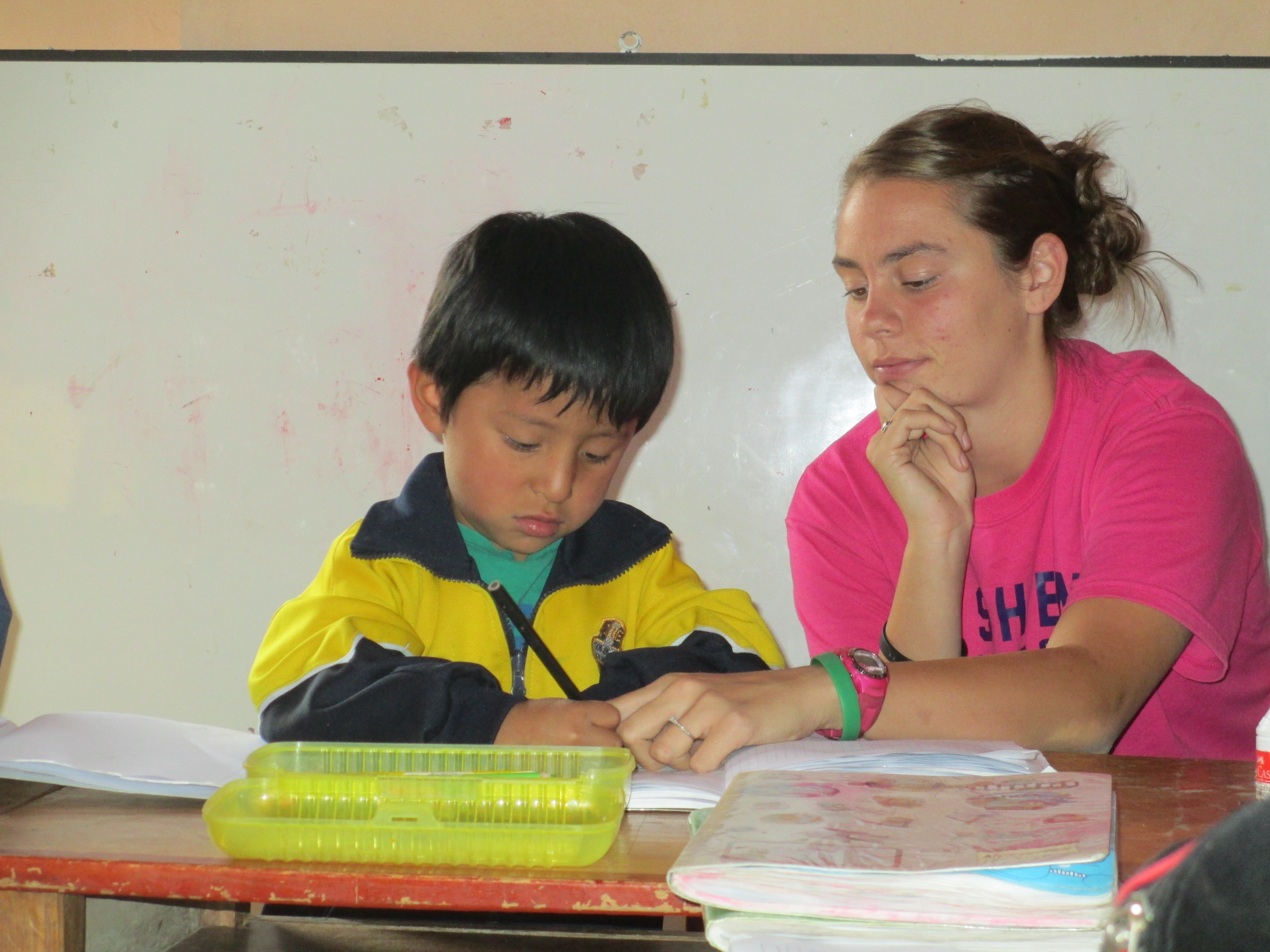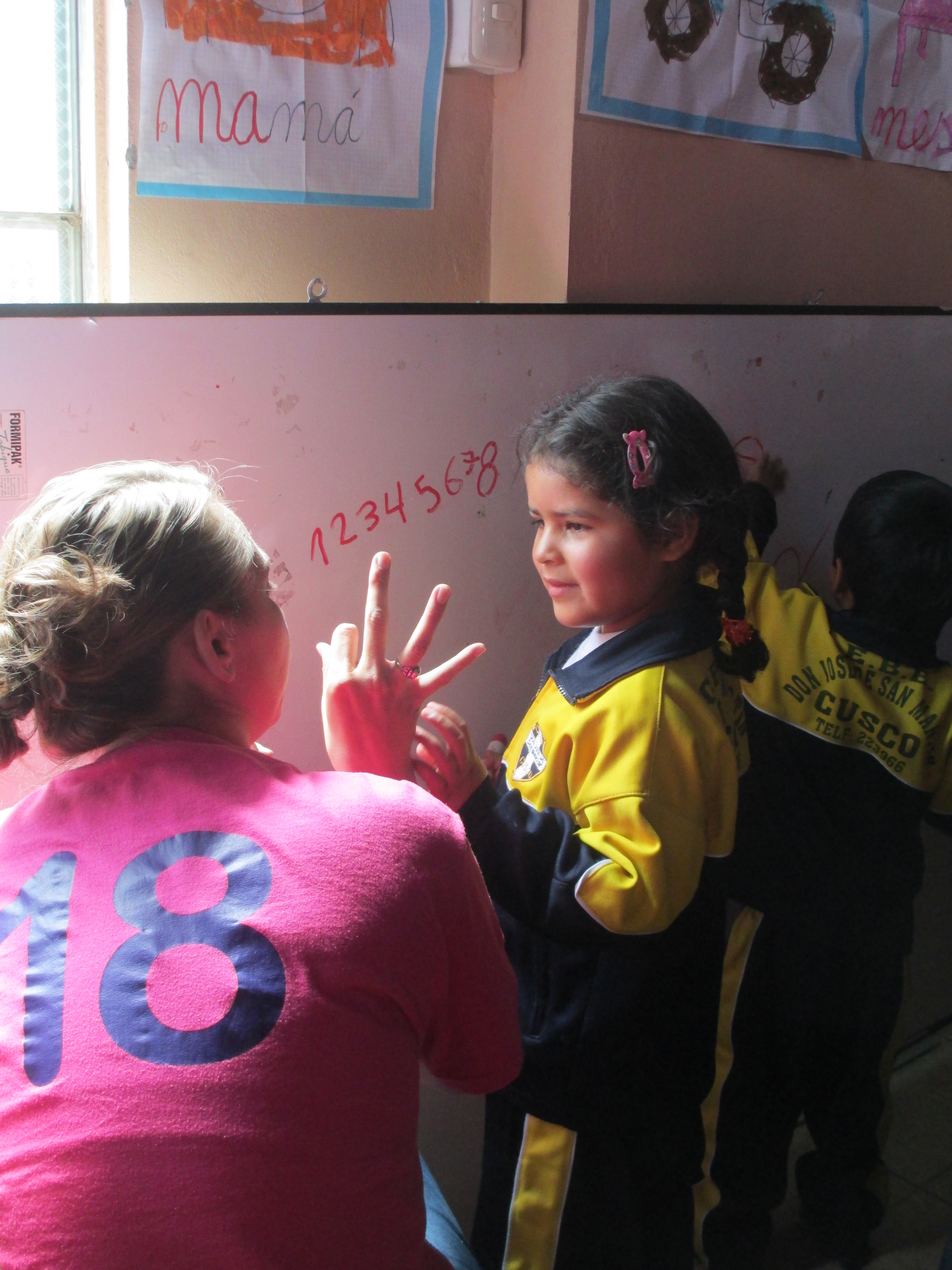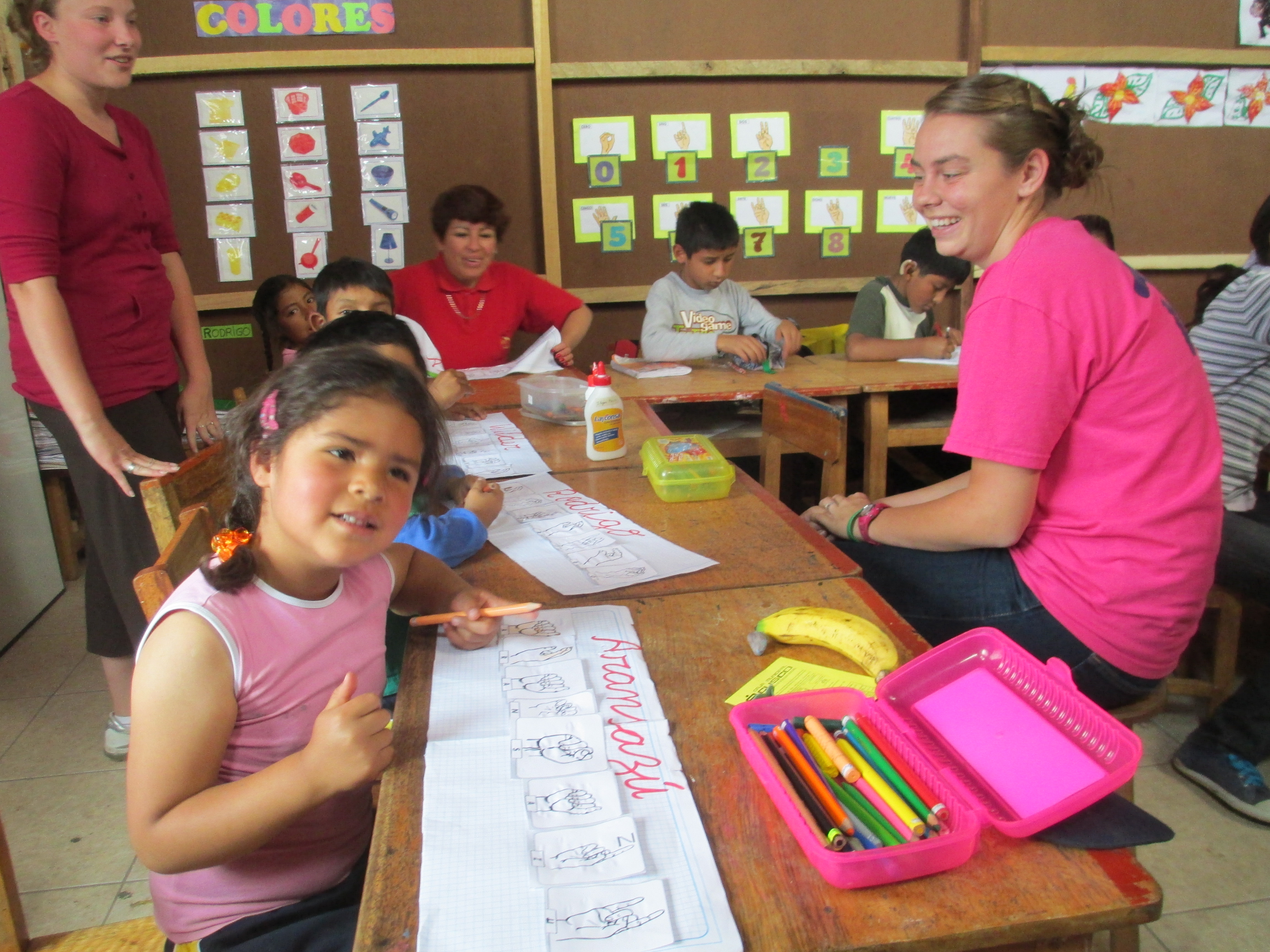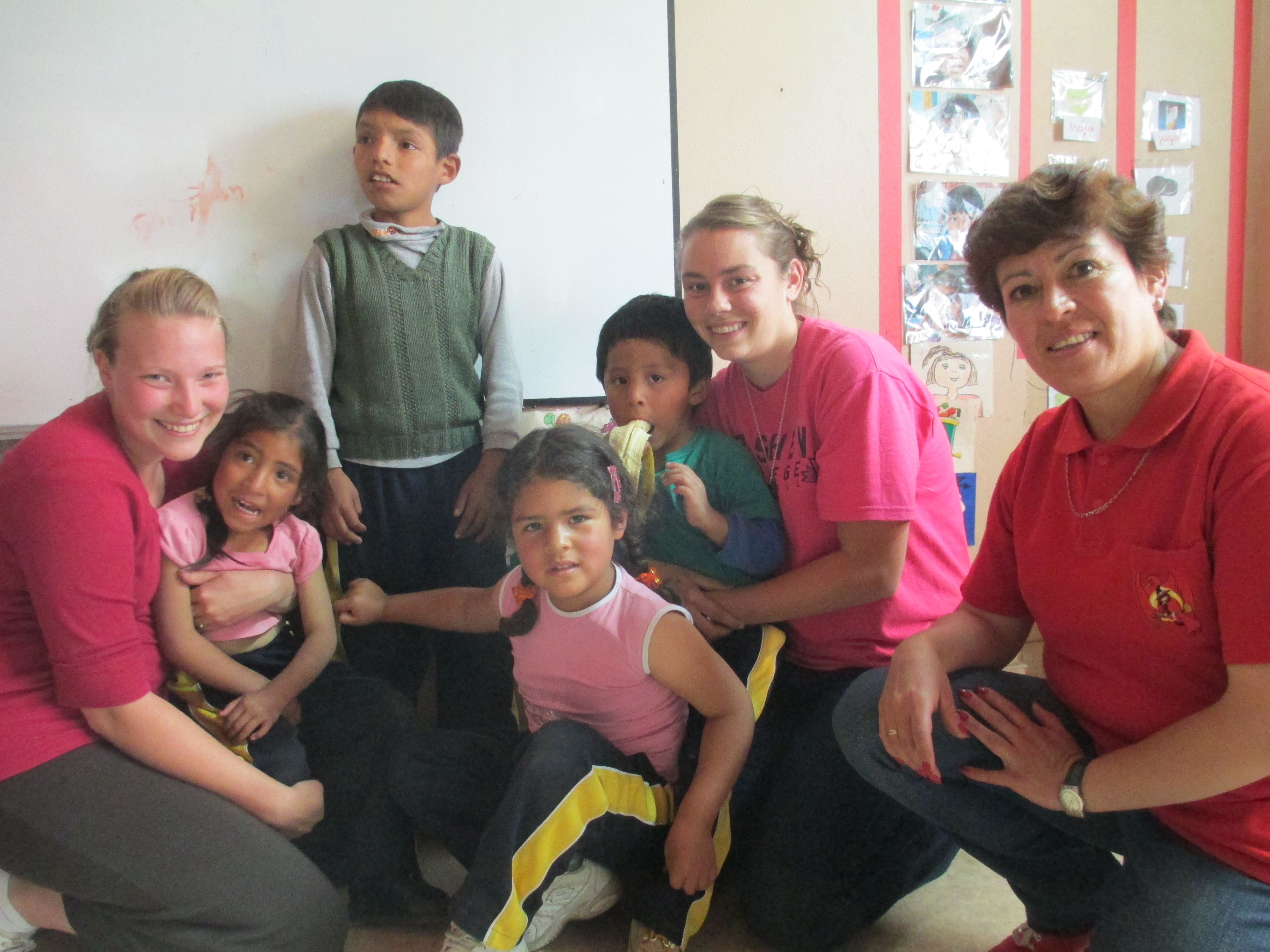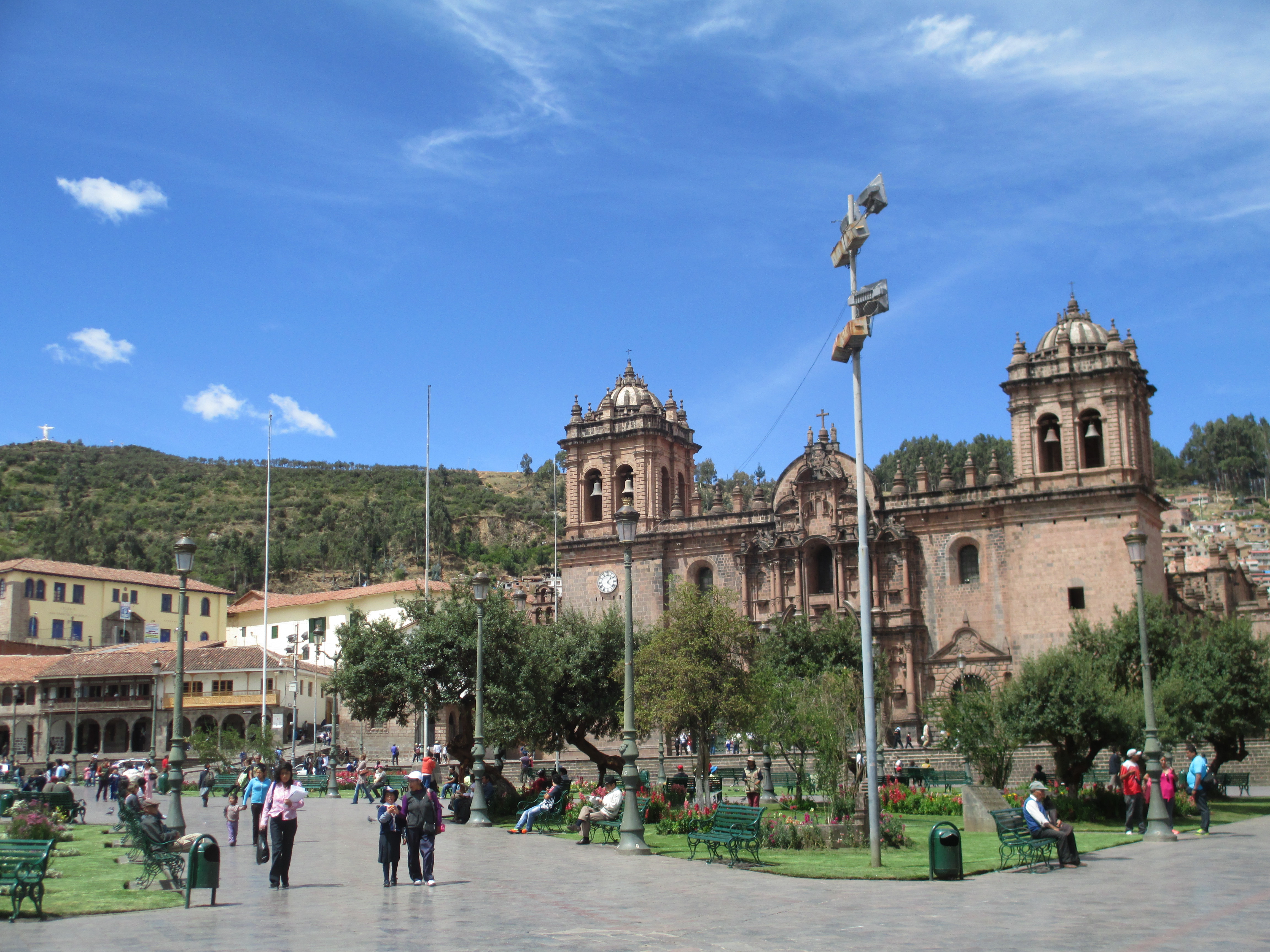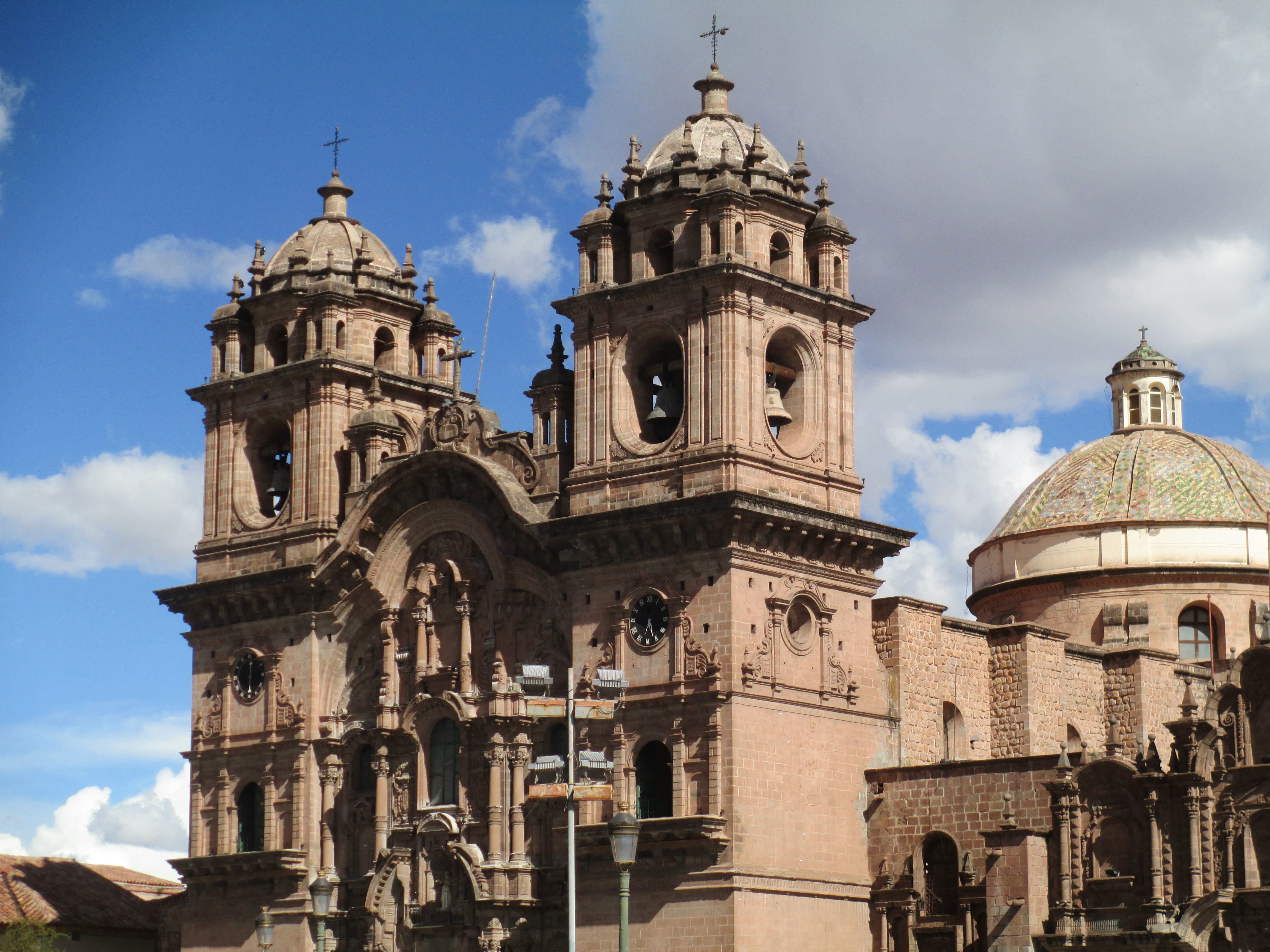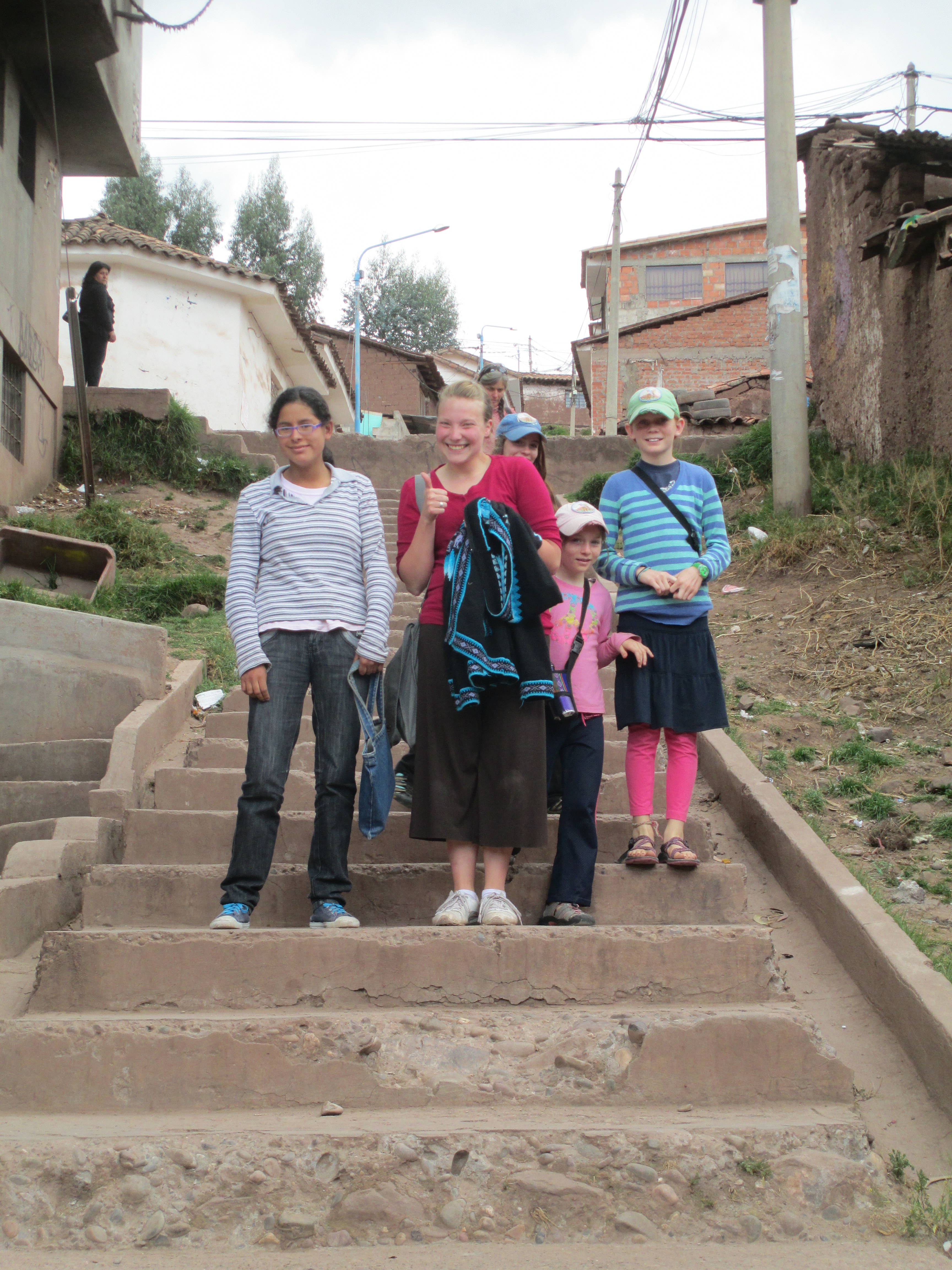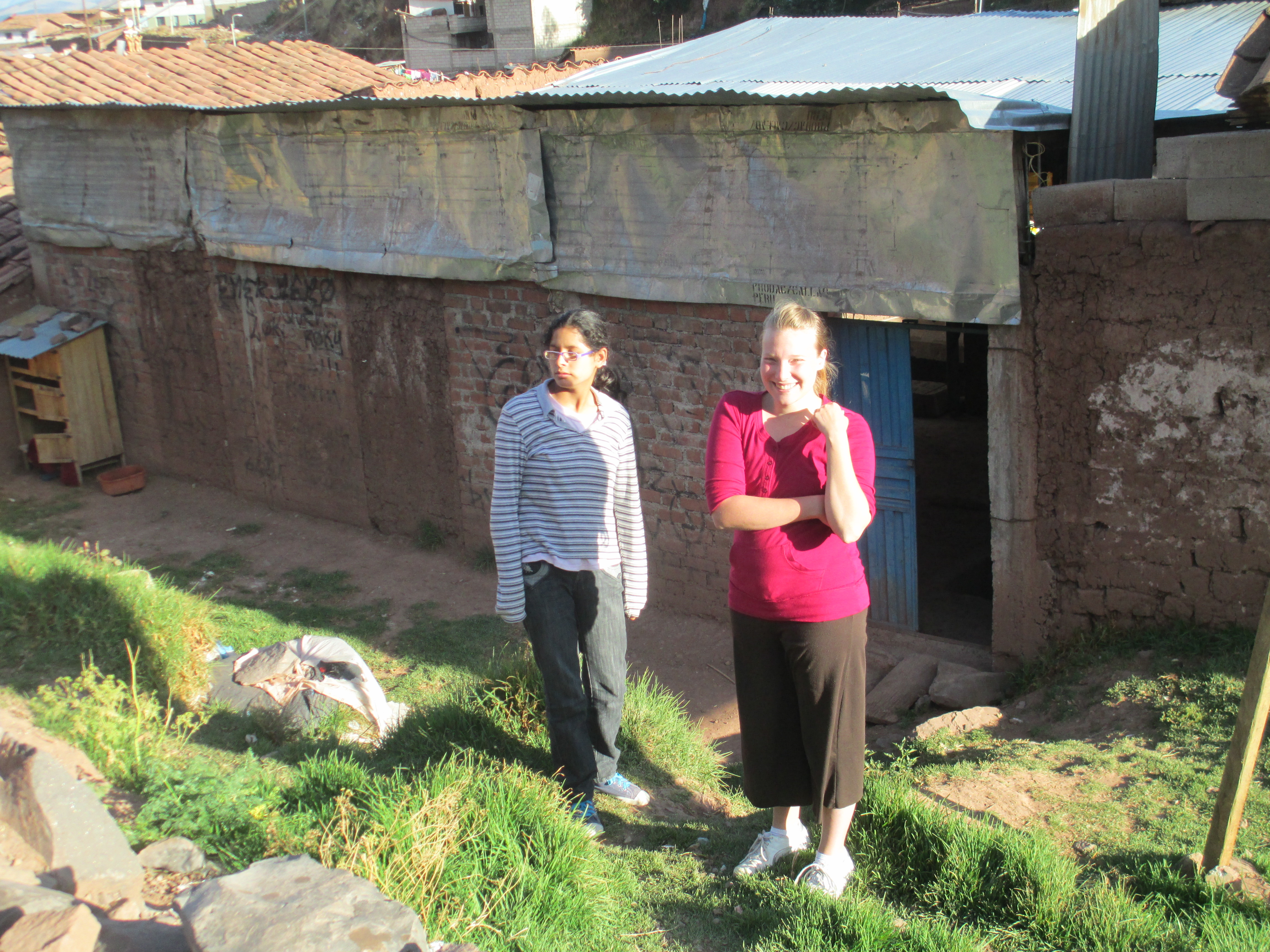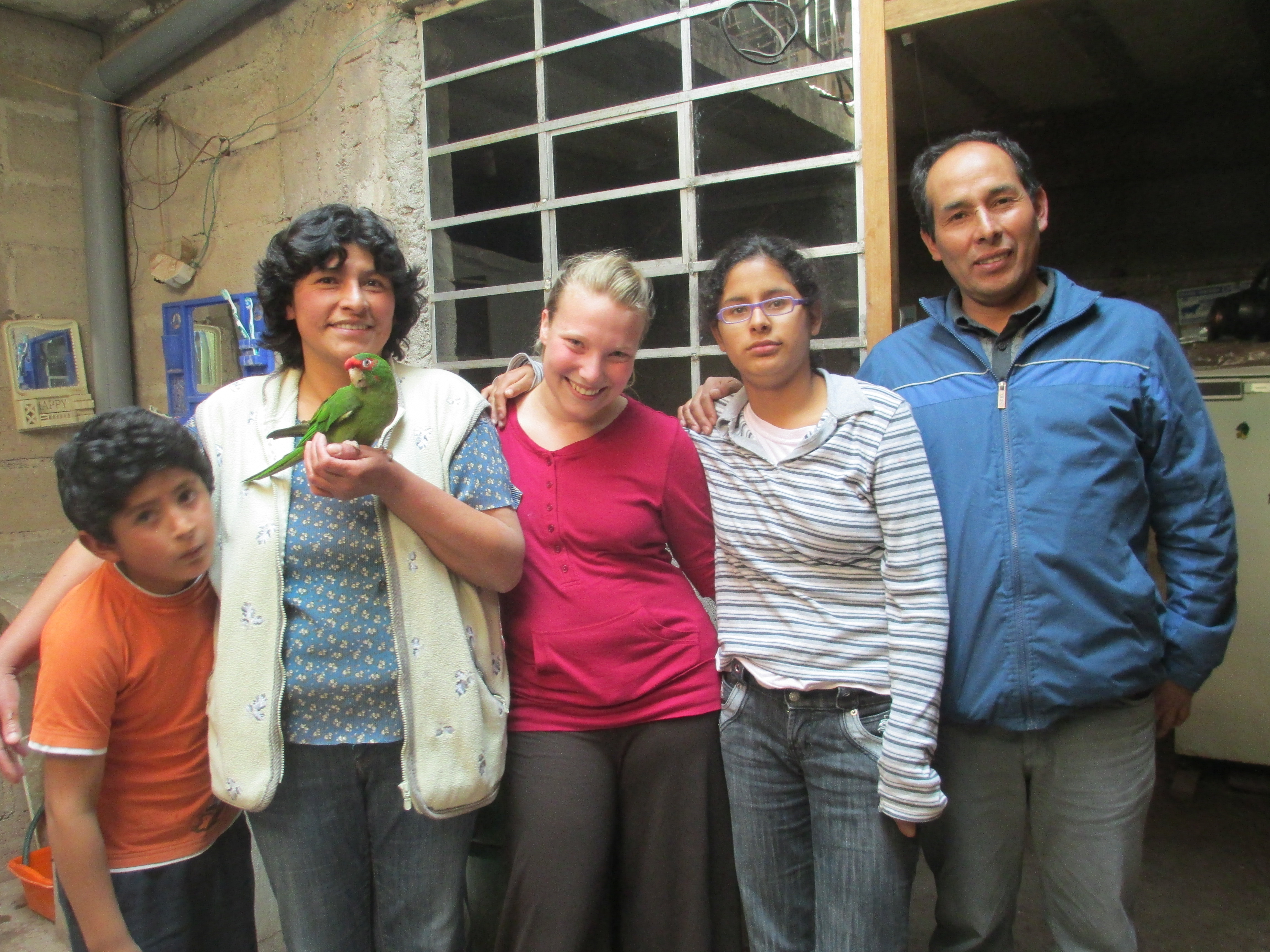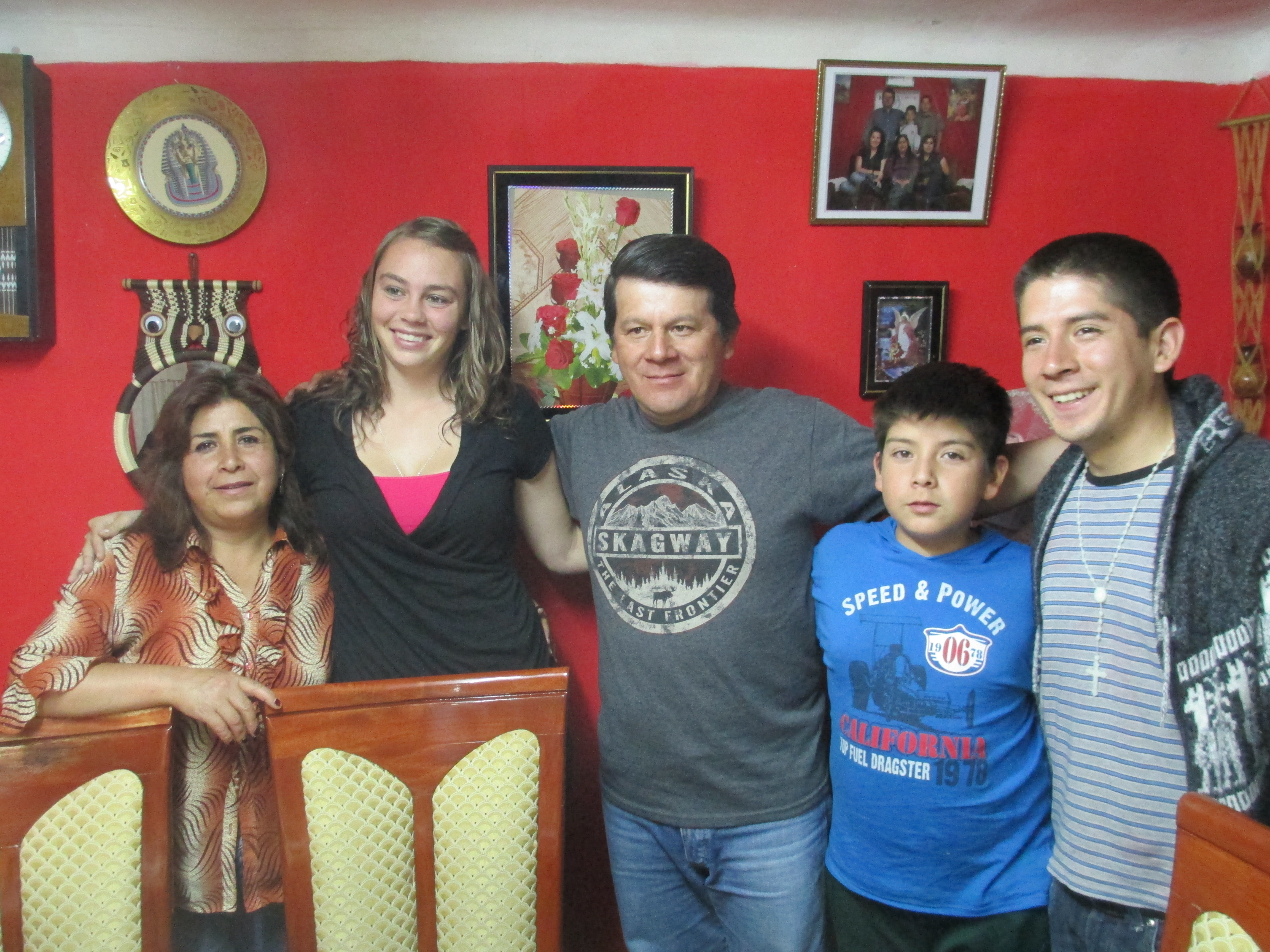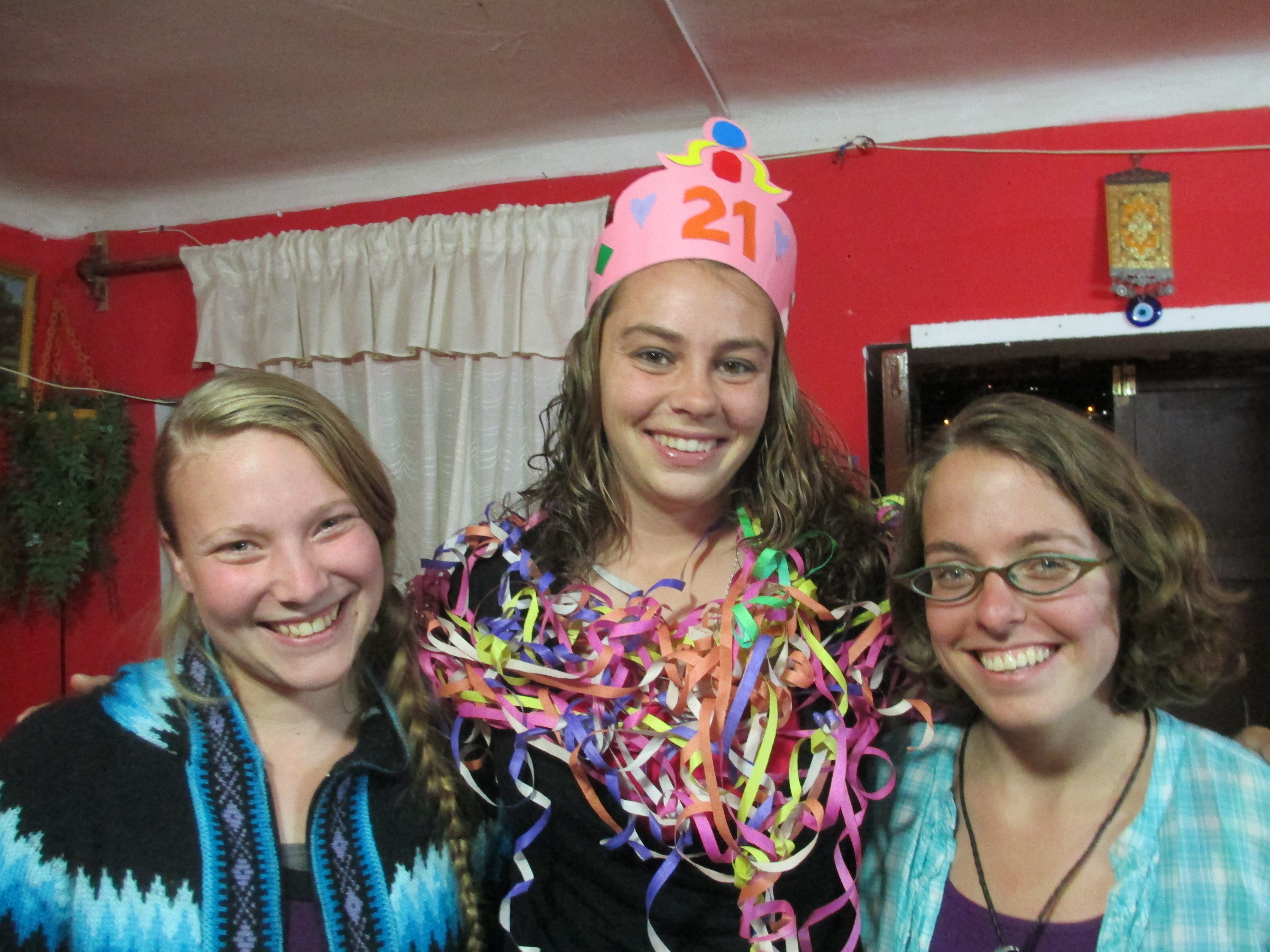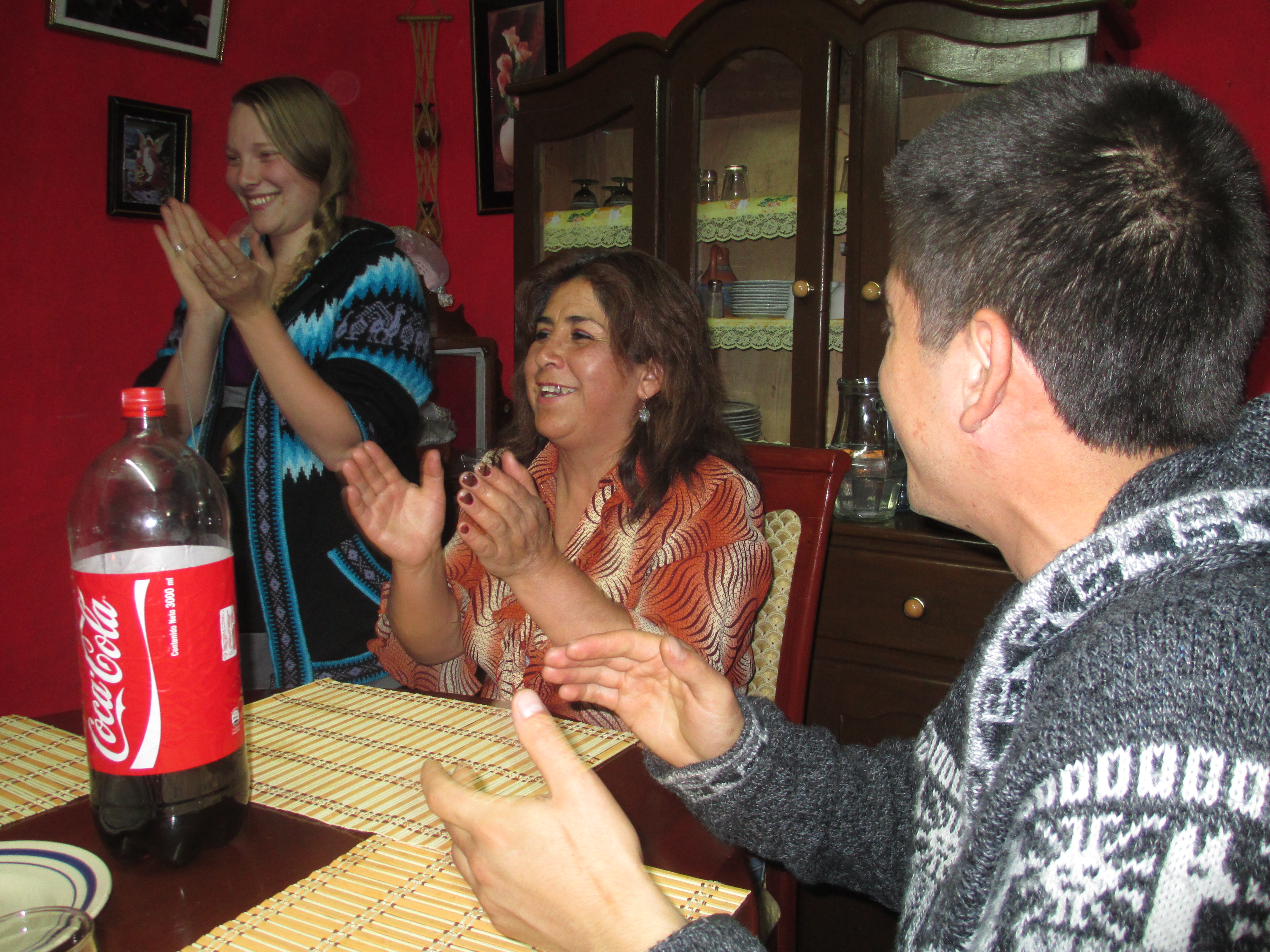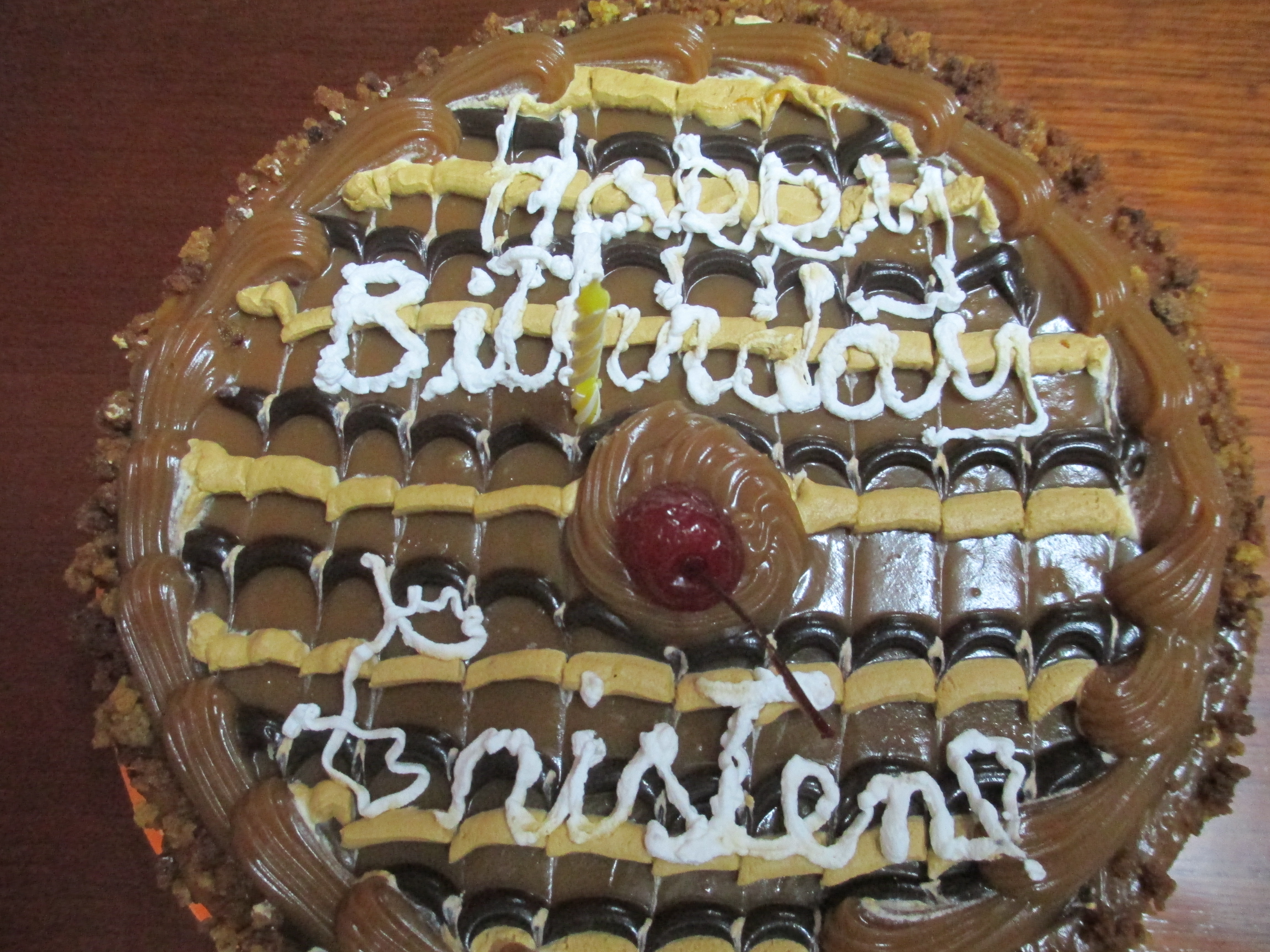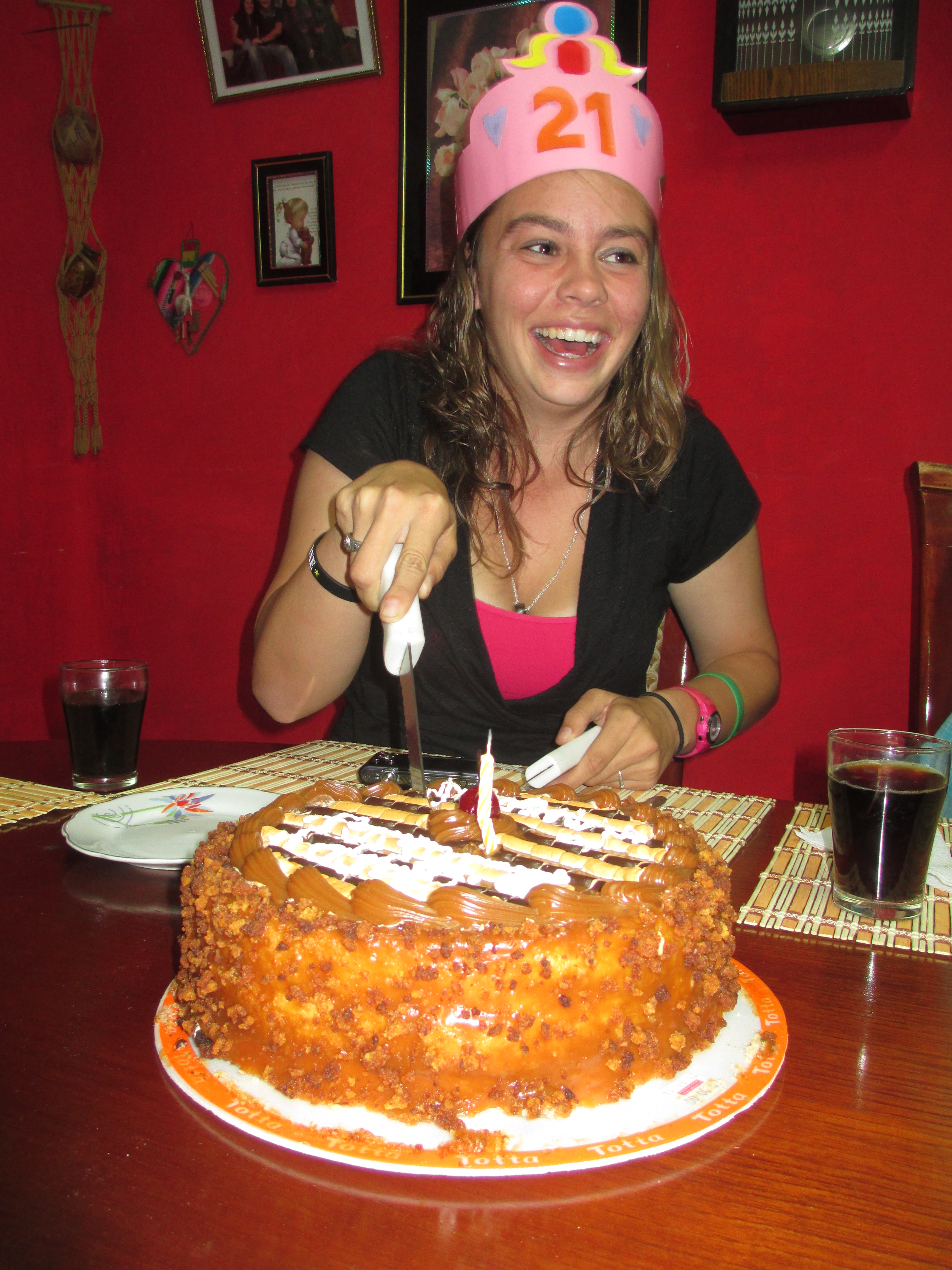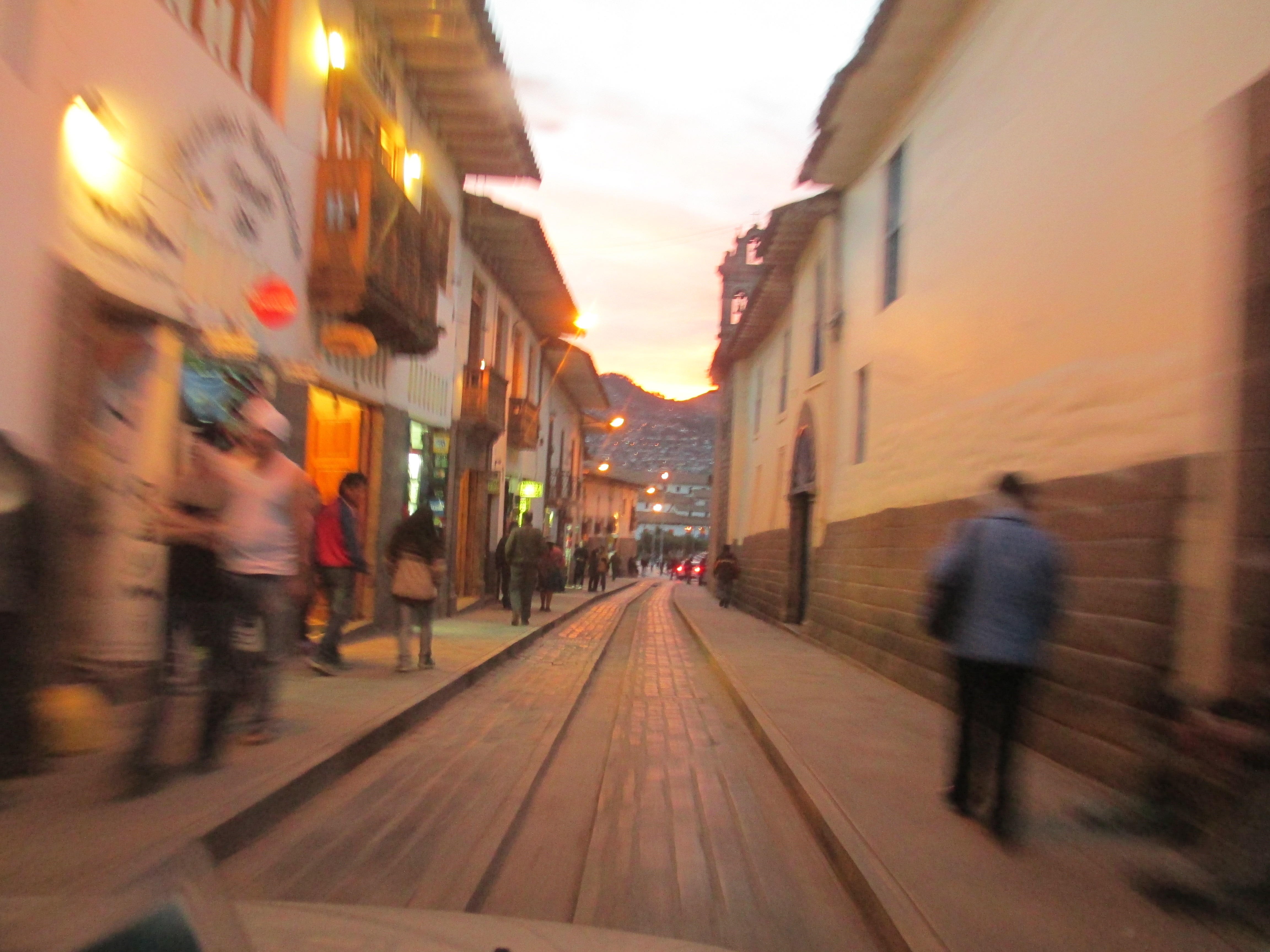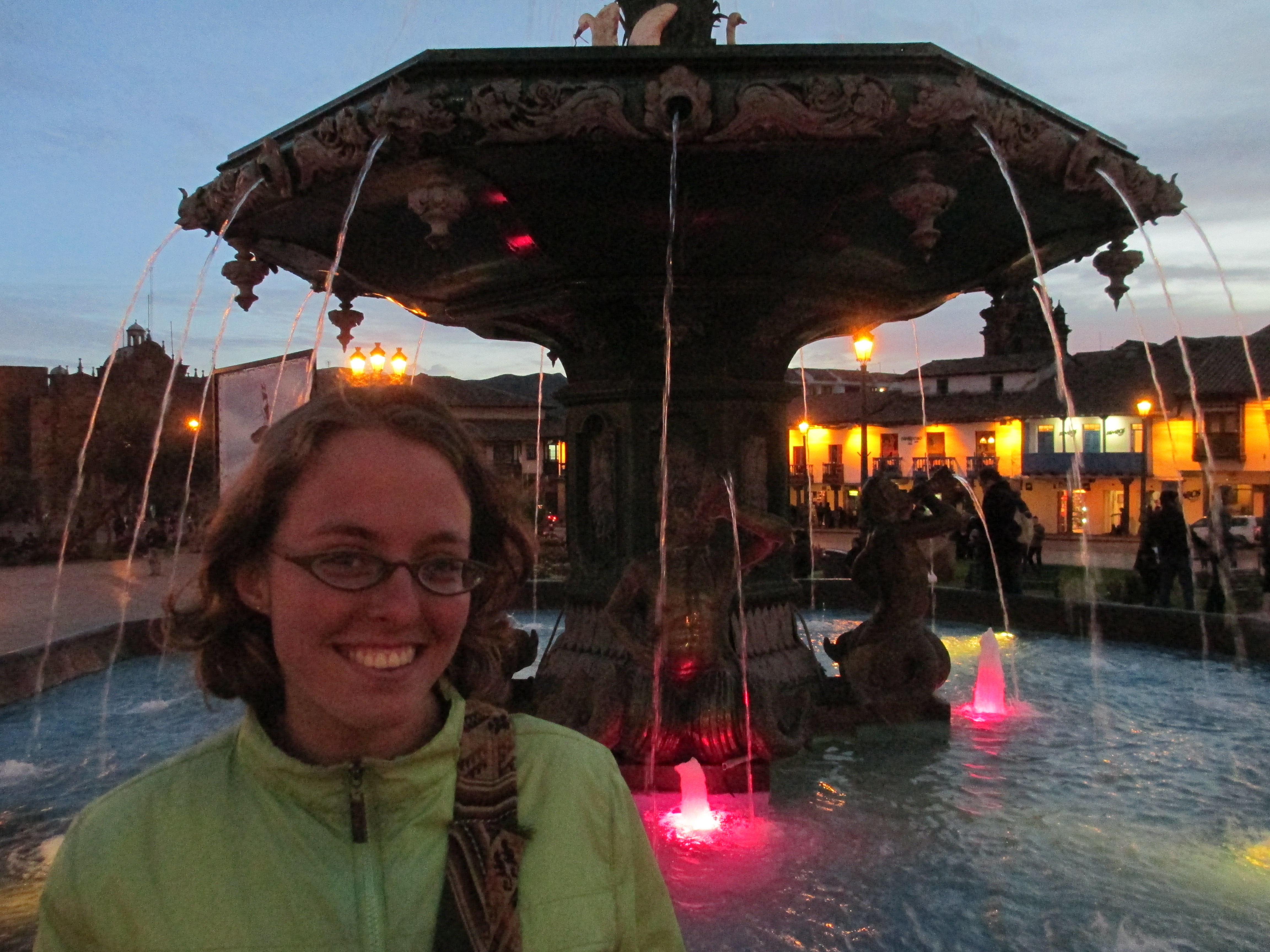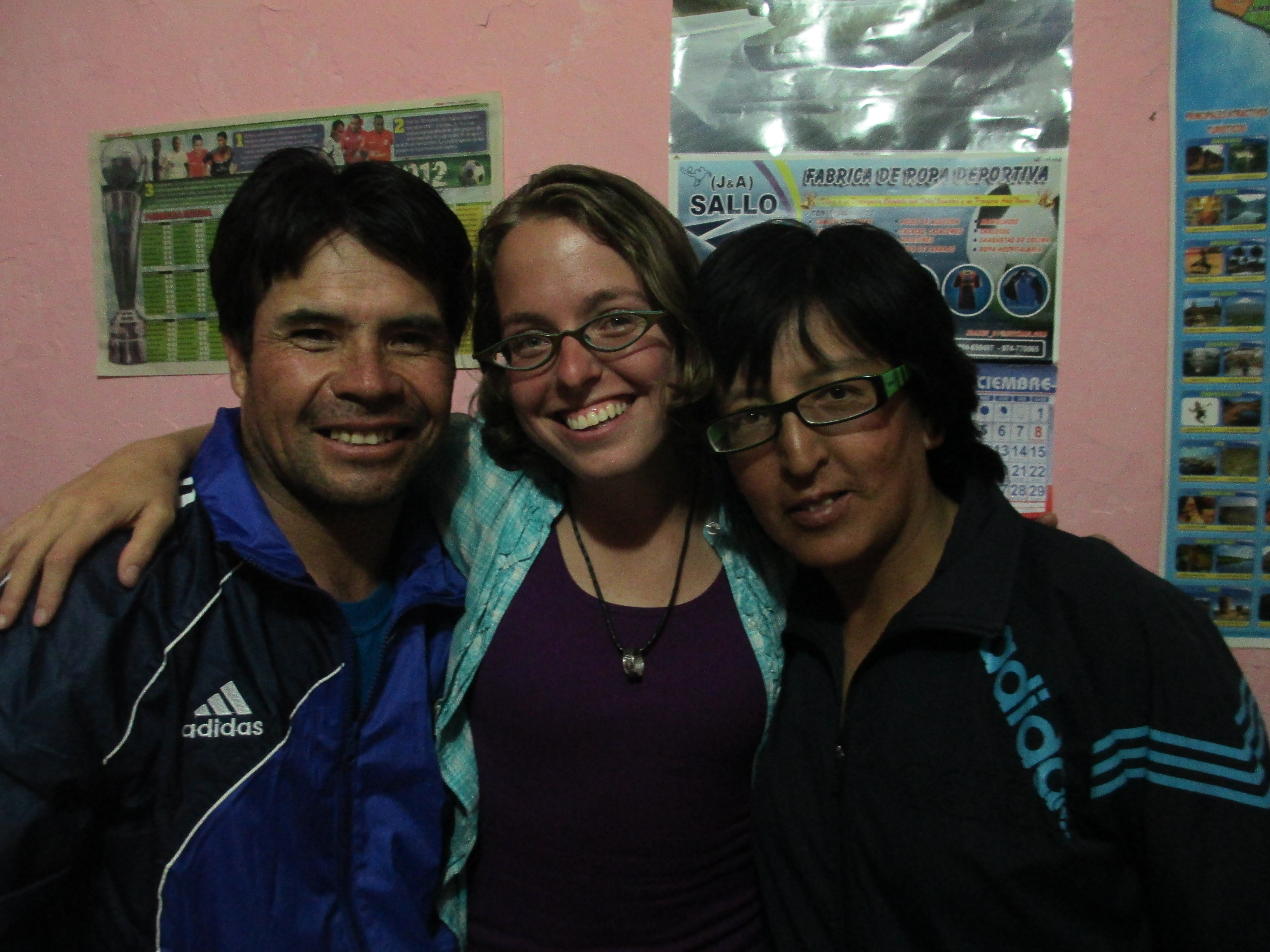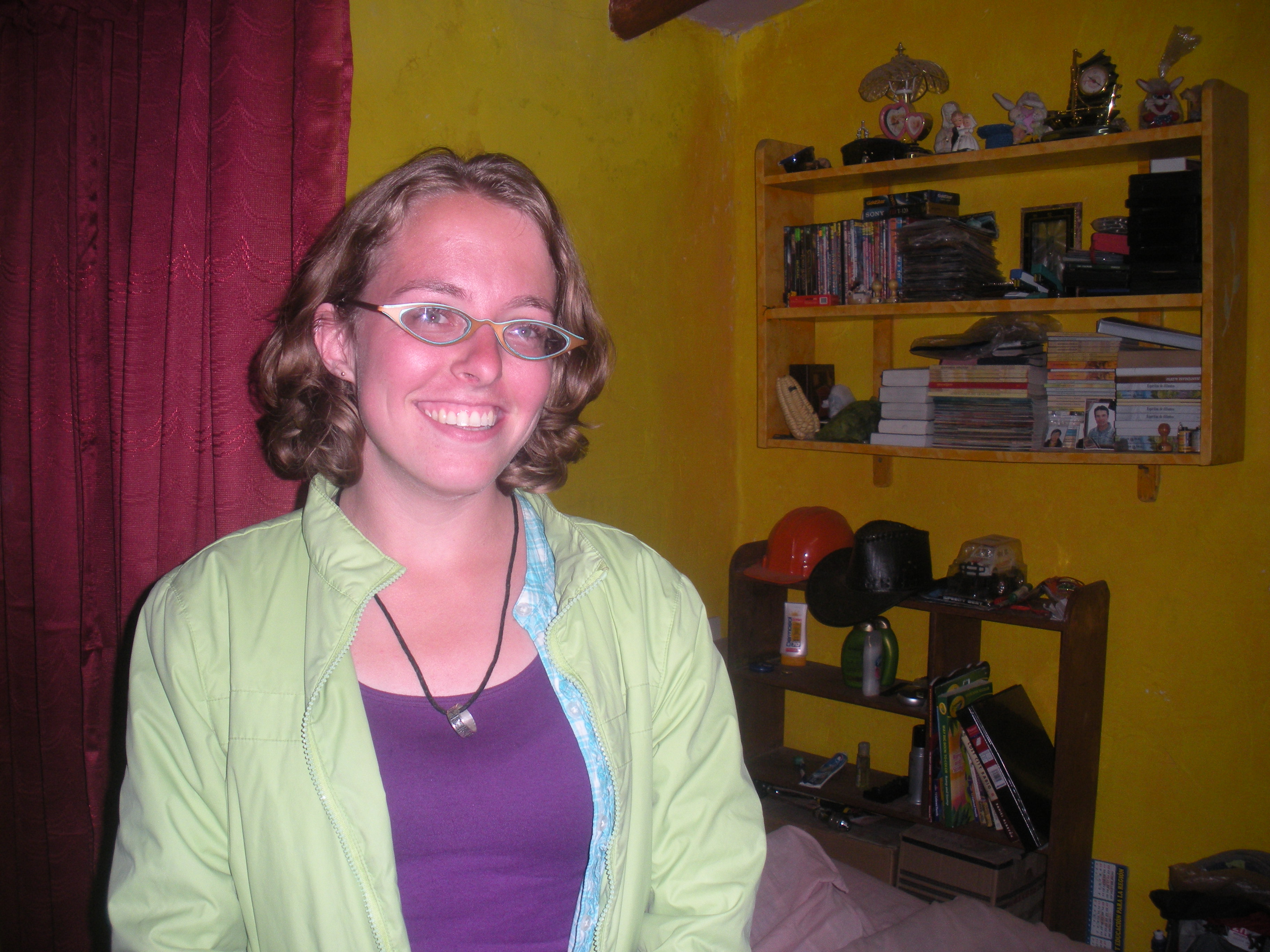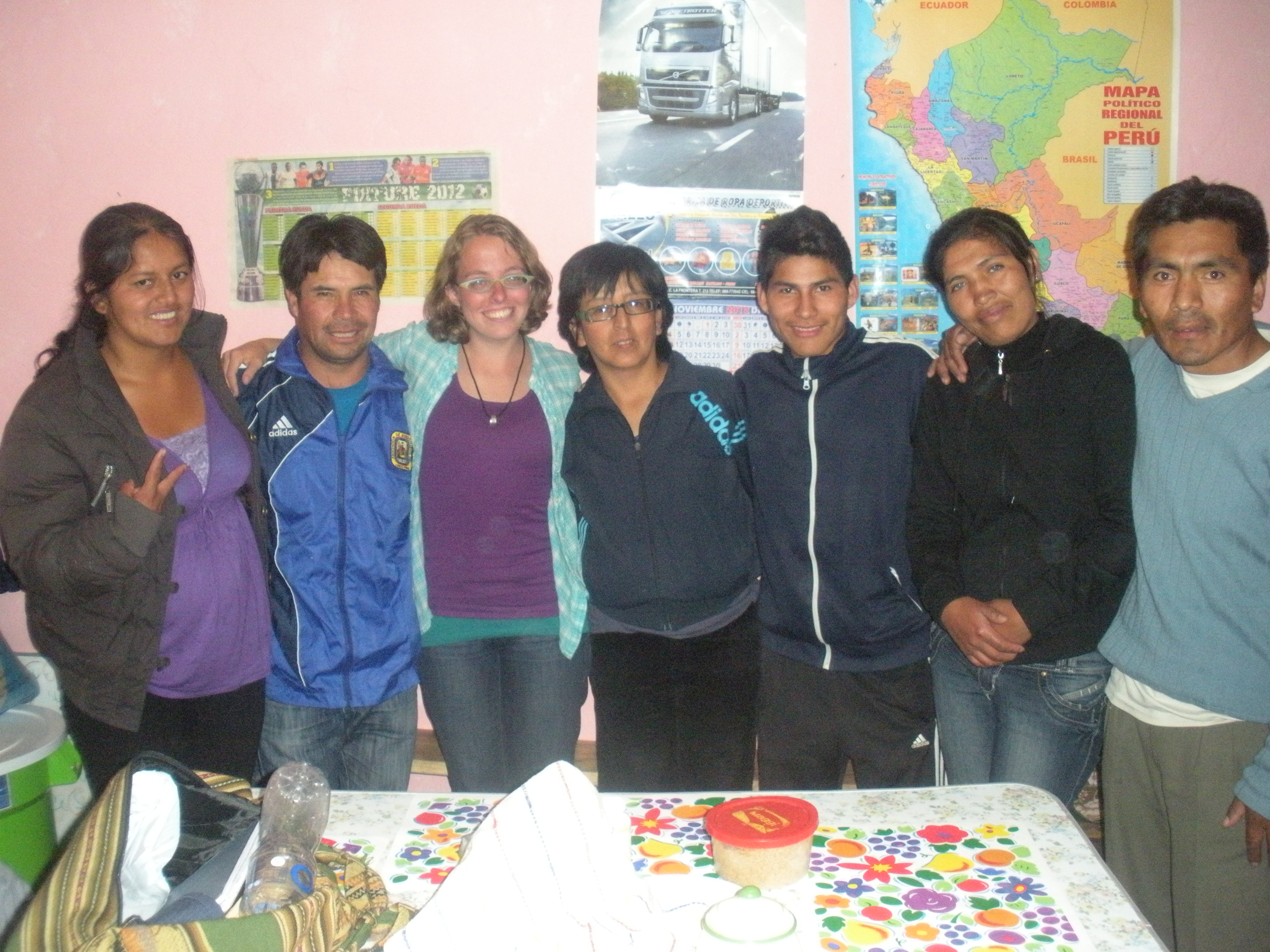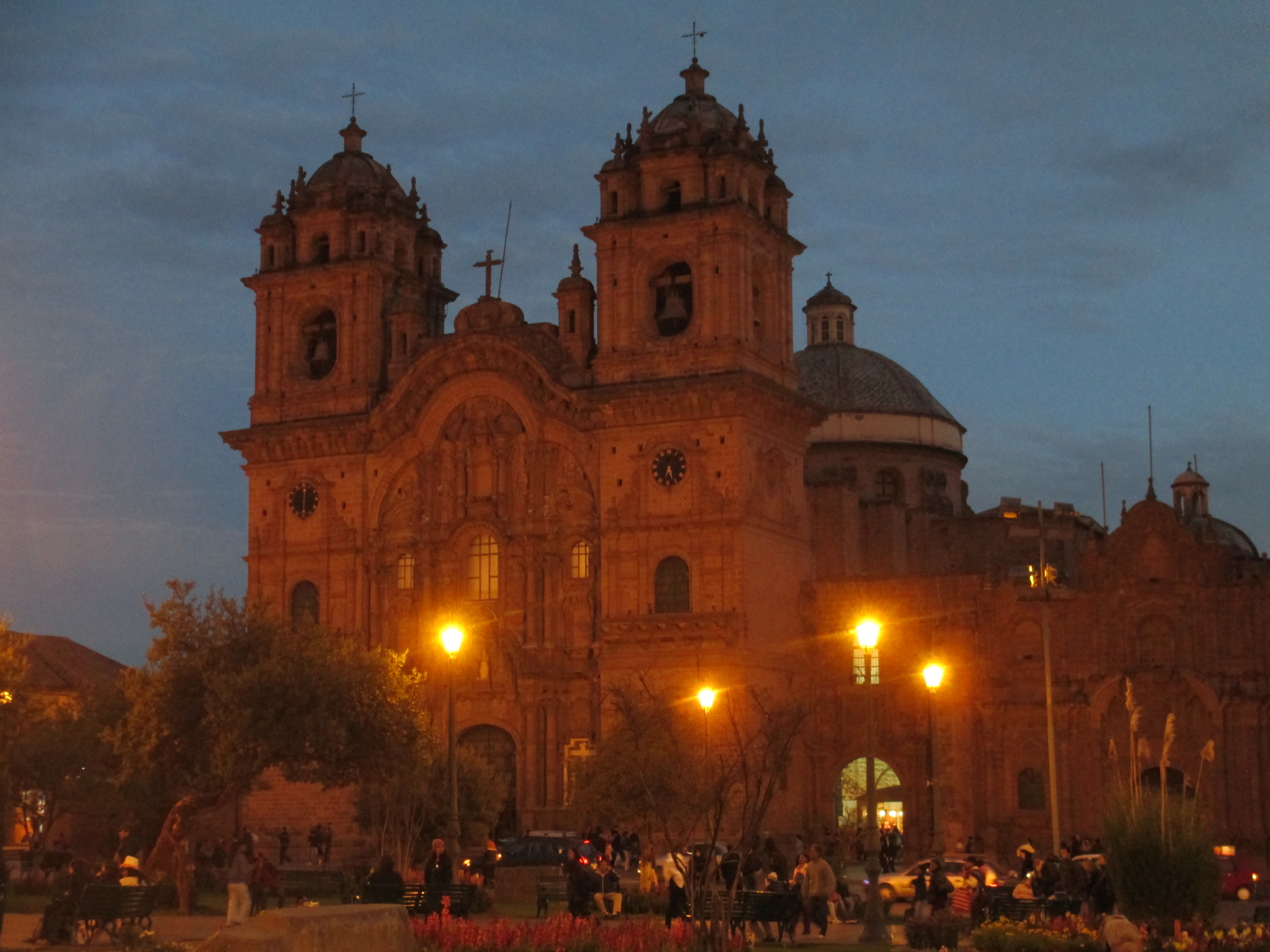Service in Cusco — San Martin

St. Martin School for Special Education (Centro Educativo Básico Especial Don José de San Martin) has a special mission: to educate disabled children. Each day parents bring their daughters and sons here to Cusco’s Wanchaq district — on foot or by bus — to give their children an opportunity to learn and develop with the help of educators who understand their needs, their abilities, their potential. Many of the students are deaf; there are two classes set aside for hearing-impaired children. Others face a range of other disabilities — mental or physical — which slow or even block their development. Many have multiple diagnoses, unable to hear and speak as well as limited ability to process information or direct the movements of their hands and feet. The challenges are immense and the teaching staff must be well-prepared, patient and focused. They can always use help.
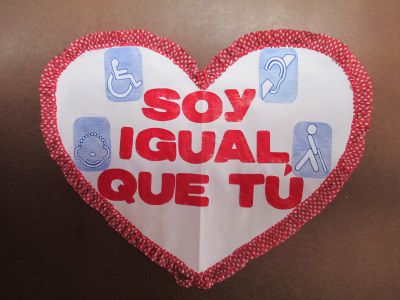
Rosa assists Señora Gabriela, the main teacher of the older group of deaf children. Ms. Gabi, as she is known here, is intent on teaching her students how to communicate with hearing people. The children are taught how to sign and, more recently, are learning how to read and write in Spanish. It should be pointed out that Peruvian Sign Language is its own unique language; each gesture of the hand and fingers forms a particular word. As such, it is not a tool for simply spelling out Spanish words. Most deaf children learn some form of sign language to communicate with their parents, whether formal signs or informal gestures. But learning how to read and write Spanish, with its particular grammar and word order, is a skill that many deaf people never master.
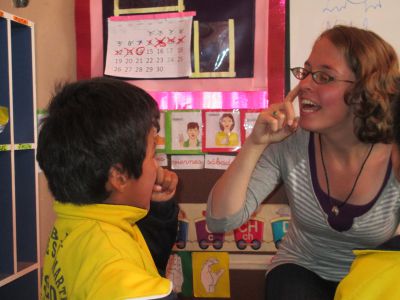
Ms. Gabi wants her students to be truly bilingual, mastering sign language and Spanish. In addition, she teaches the children how to vocalize particular sounds, focusing on the part of their mouth or throat where the sound is generated. Rosa can relate to these children — her own hearing impairment makes her particularly qualified to assist Ms. Gabi in the task of teaching hearing-impaired children to pronounce words, using techniques that were taught to her as a child in North America. Rosa’s personal experience is an inspiration to the students and her knowledge of sign language is a real asset in the classroom. At Ms. Gabi’s side, she is helping the young boys and girls in her class to both understand and be understood.
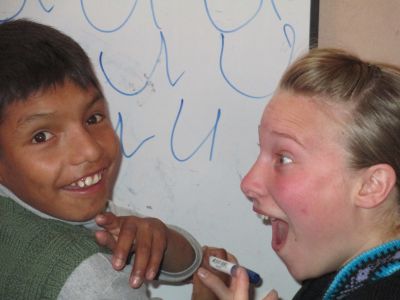
Keyonna and Christine are volunteering in Señora Carmen’s class. Due to space limitations, both classes meet in the same room. Señora Carmen’s group is younger, and many are both deaf and diagnosed with nearly debilitating mental or physical development problems. Keyonna has been tasked with giving one-on-one attention to Wilder, a 13-year-old boy who appears and acts much younger. According to Señora Carmen, Wilder’s parents were willing to give him up for dead when he was younger, seeing his condition as so hopeless that any investment in prolonging his life, or giving him a chance to learn, seemed a waste of time and resources. Spending time with Wilder, however, reveals a precious, adorable human being — with a great smile. Keyonna has made slow but steady progress, teaching him how to write several vowels, a tremendous accomplishment given the obstacles to his development. Her patience and dedication have resulted in a strong bond between Keyonna and her student.
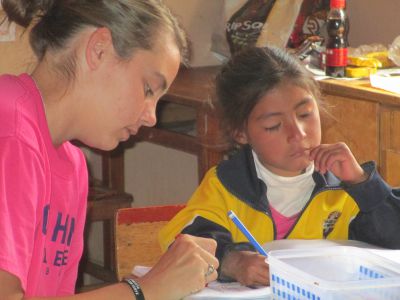
Christine spends her mornings with a variety of children in Señora Carmen’s class. One reportedly suffered a seizure lasting an hour and now shows little responsiveness to outside stimulation. Others have learning disabilities that are less severe but troubling nonetheless. Christine helps the children learn to write, to draw, to work on simple tasks, using sign language to communicate whenever possible. The individual attention she warmly offers the girls and boys in her class is clearly helpful to the teacher and appreciated by her students. The children are often scorned or ignored by society, including family members in many cases, and they need all the warmth and love they can get.
Christine, Keyonna and Rosa have opened their hearts and minds to young lives at San Martin School. They have signed, smiled and found many ways to share what they have with children who live on the margins of society. And the children have reciprocated, generously giving their trust, love and smiles to the students. Together, Christine, Keyonna and Rosa — actually, all of our students this term — have followed Christ’s call to “Let the little children come to me, and do not hinder them, for the kingdom of heaven belongs to such as these” (Matthew 19:14).
